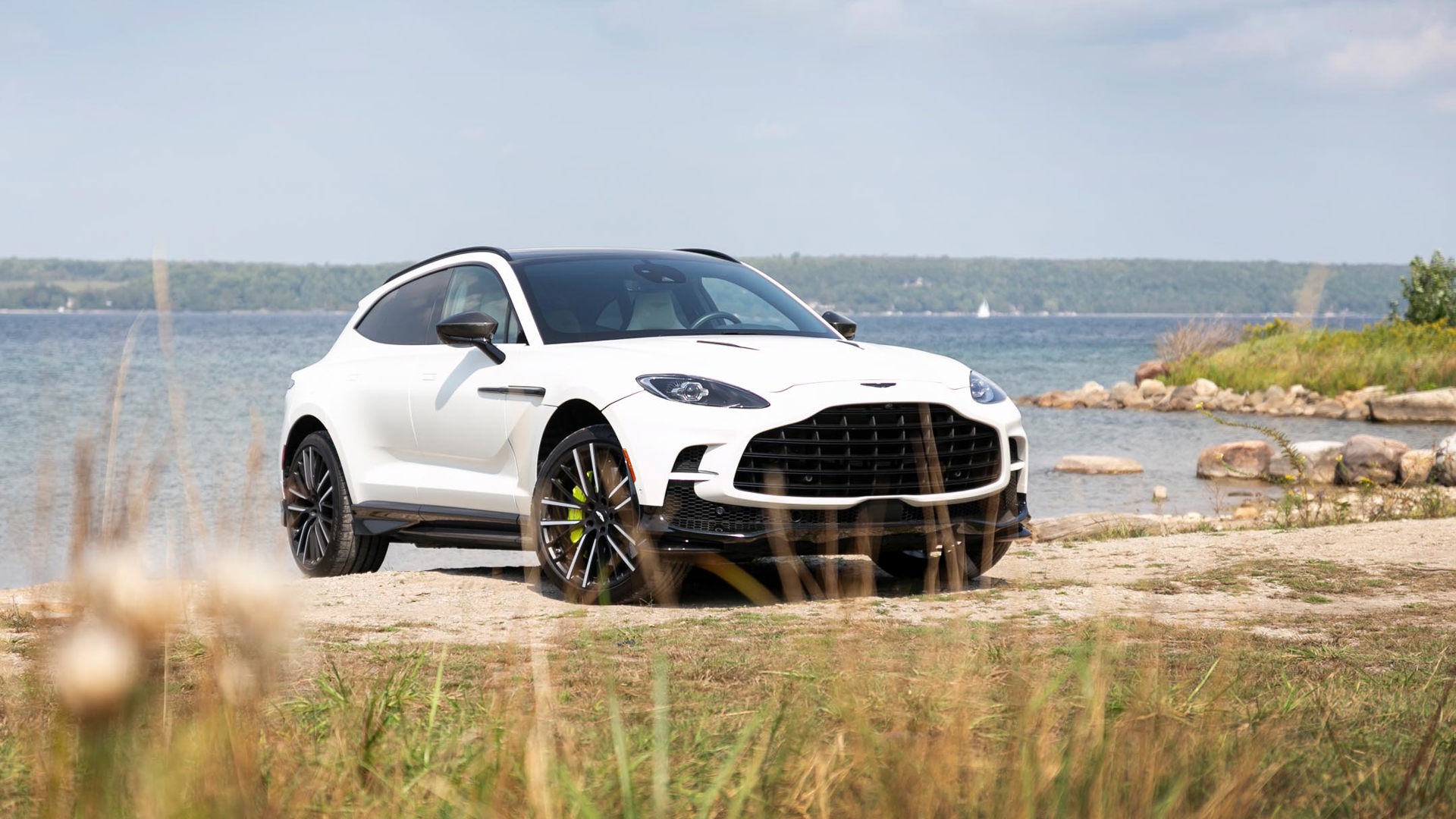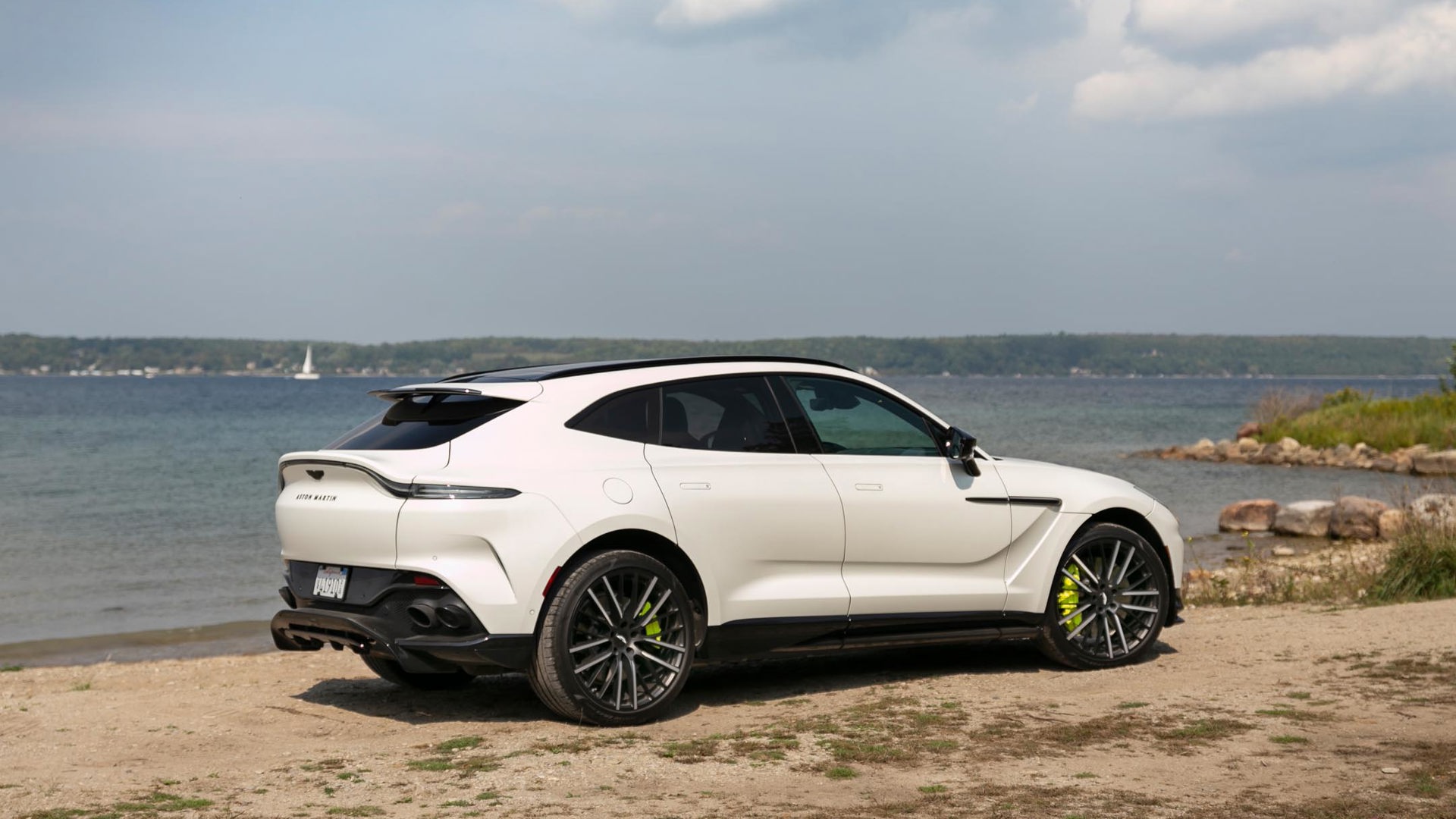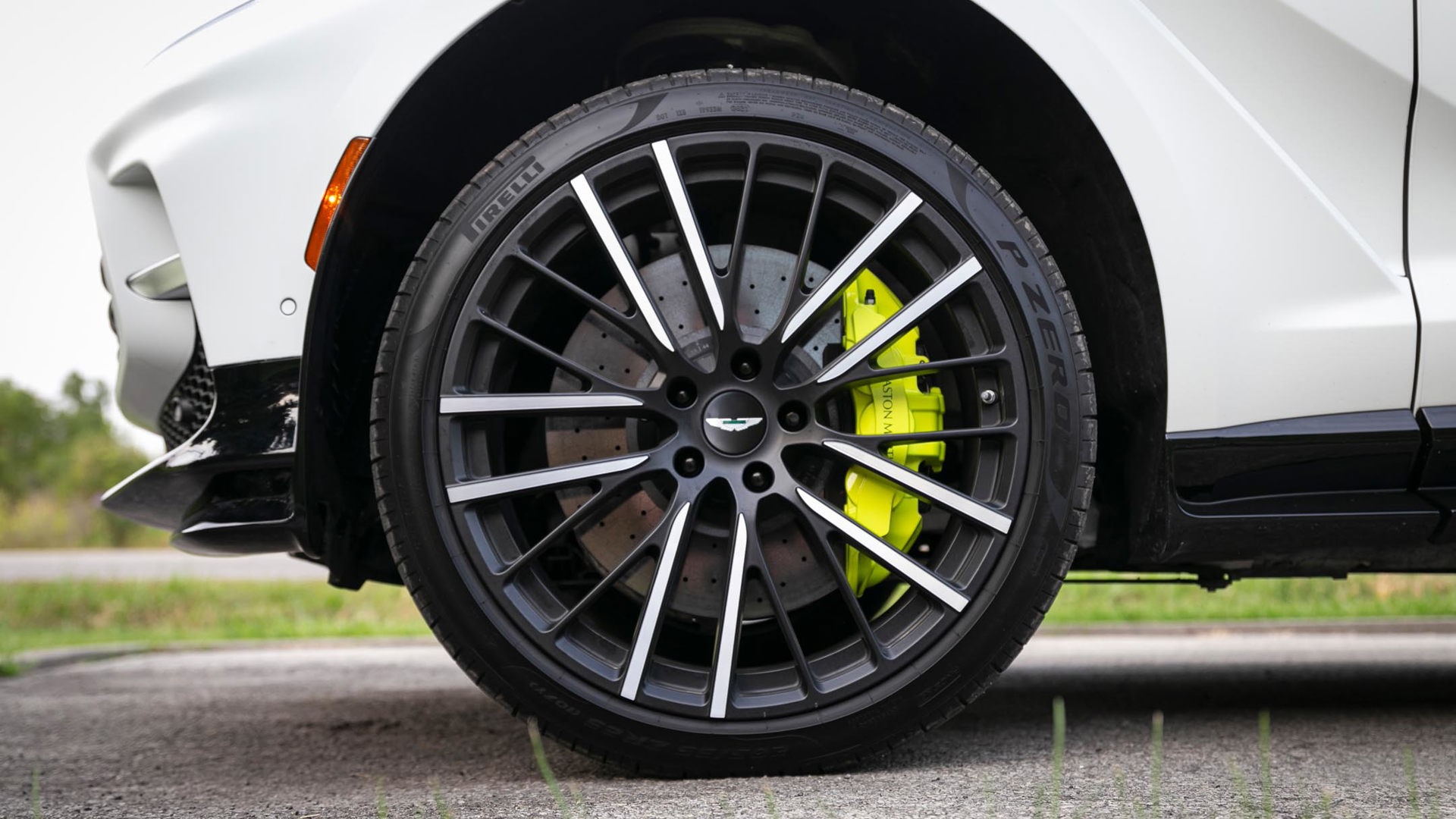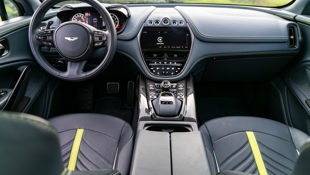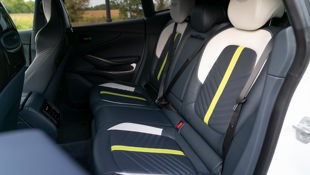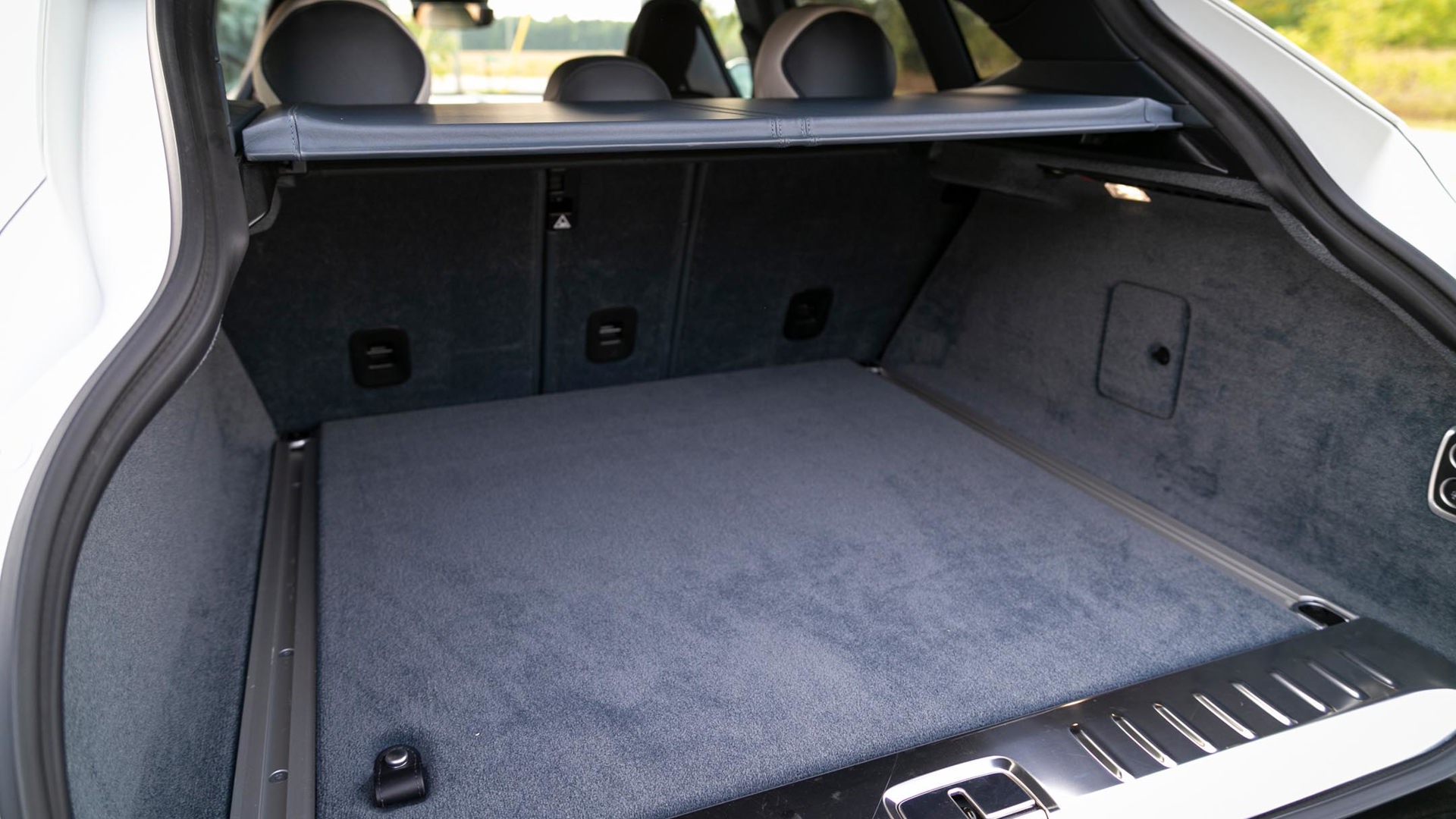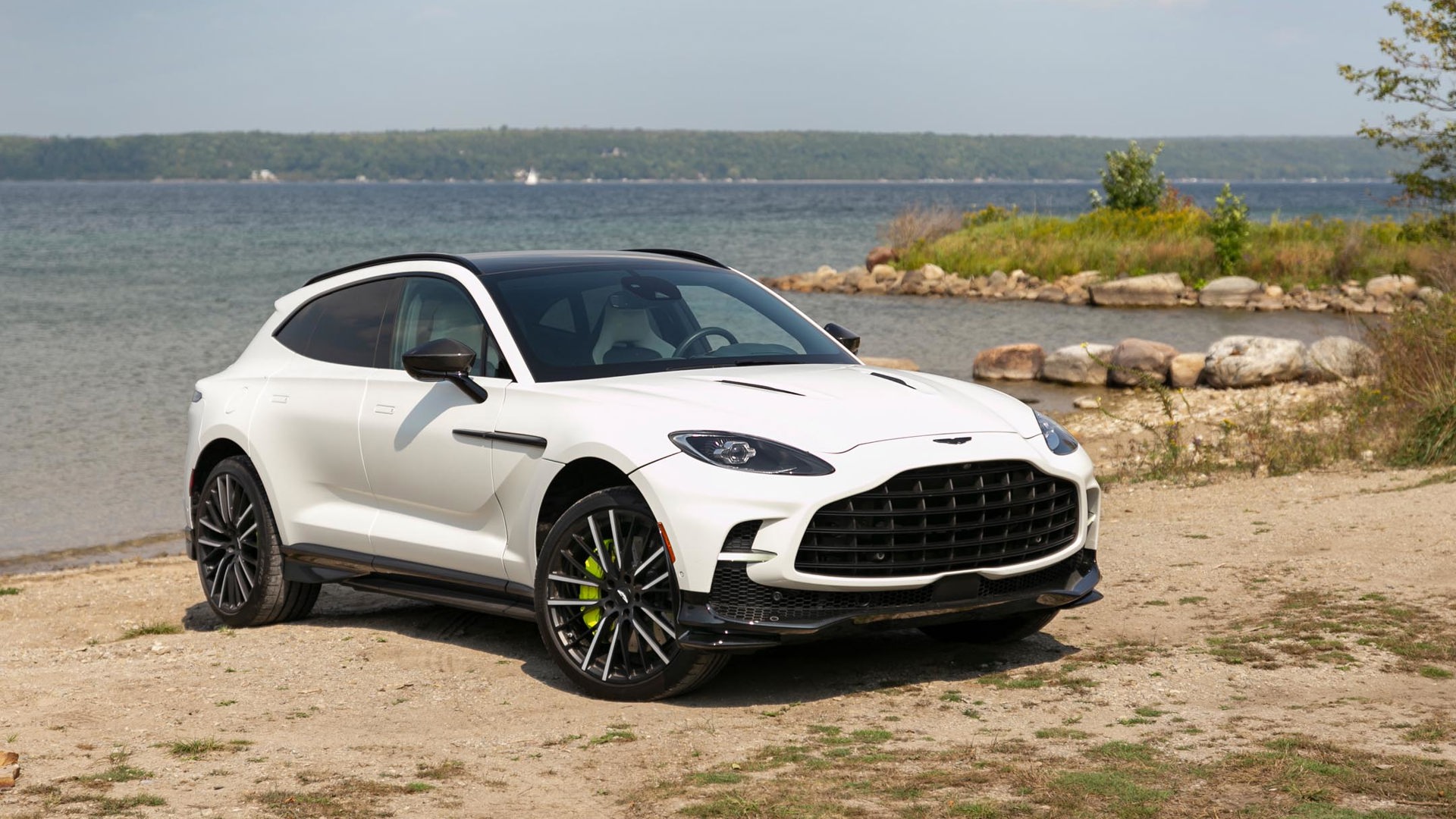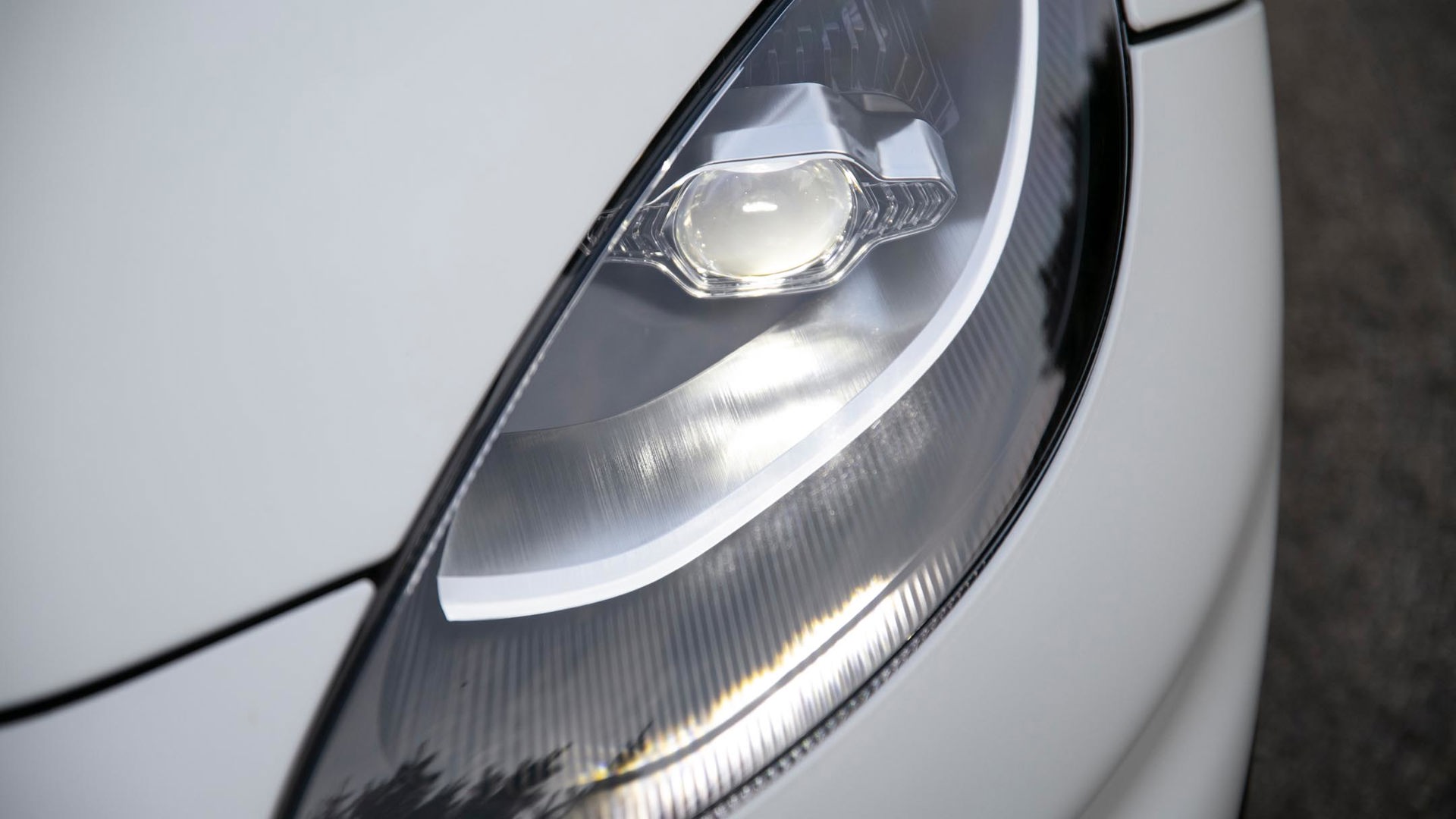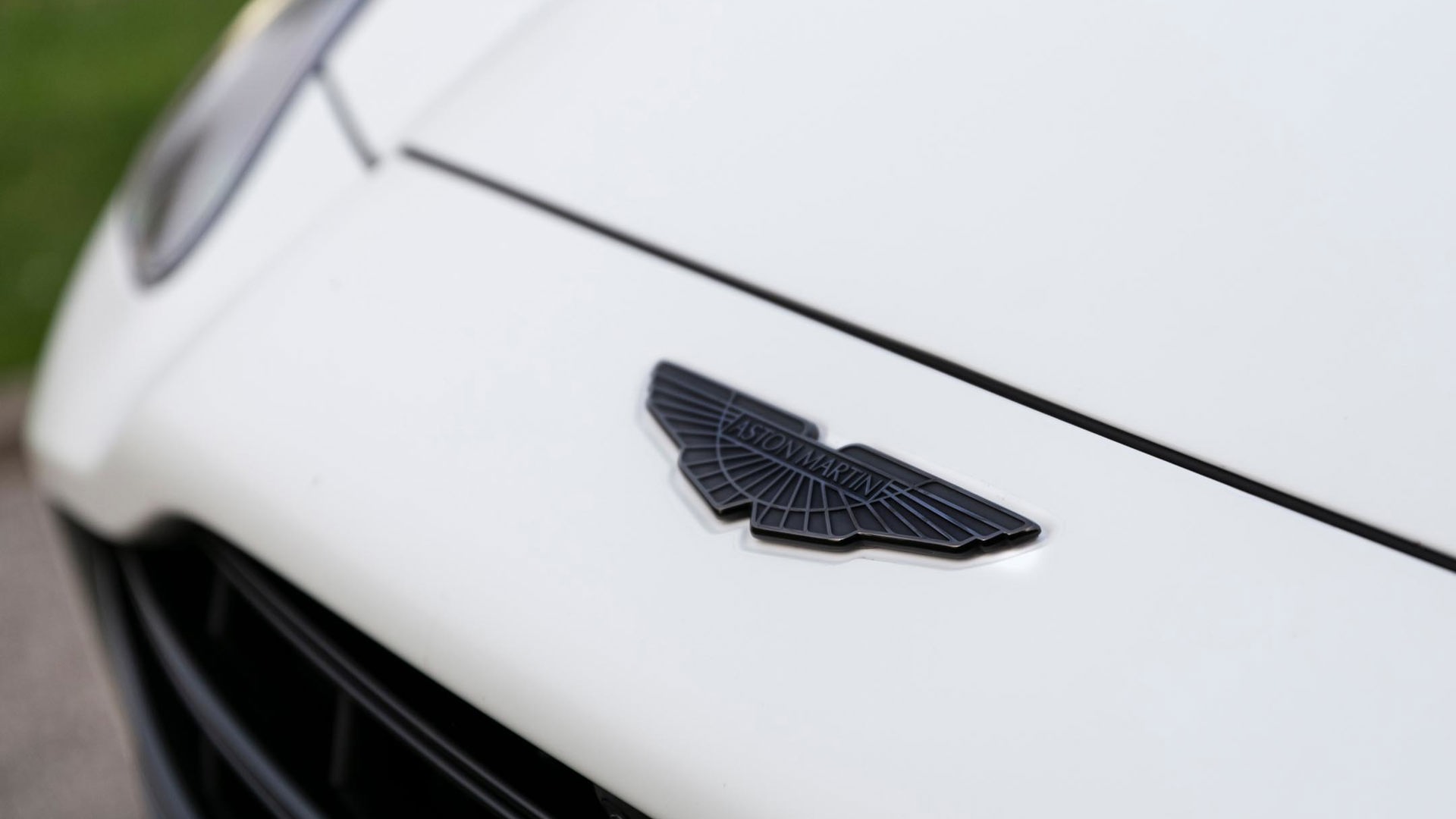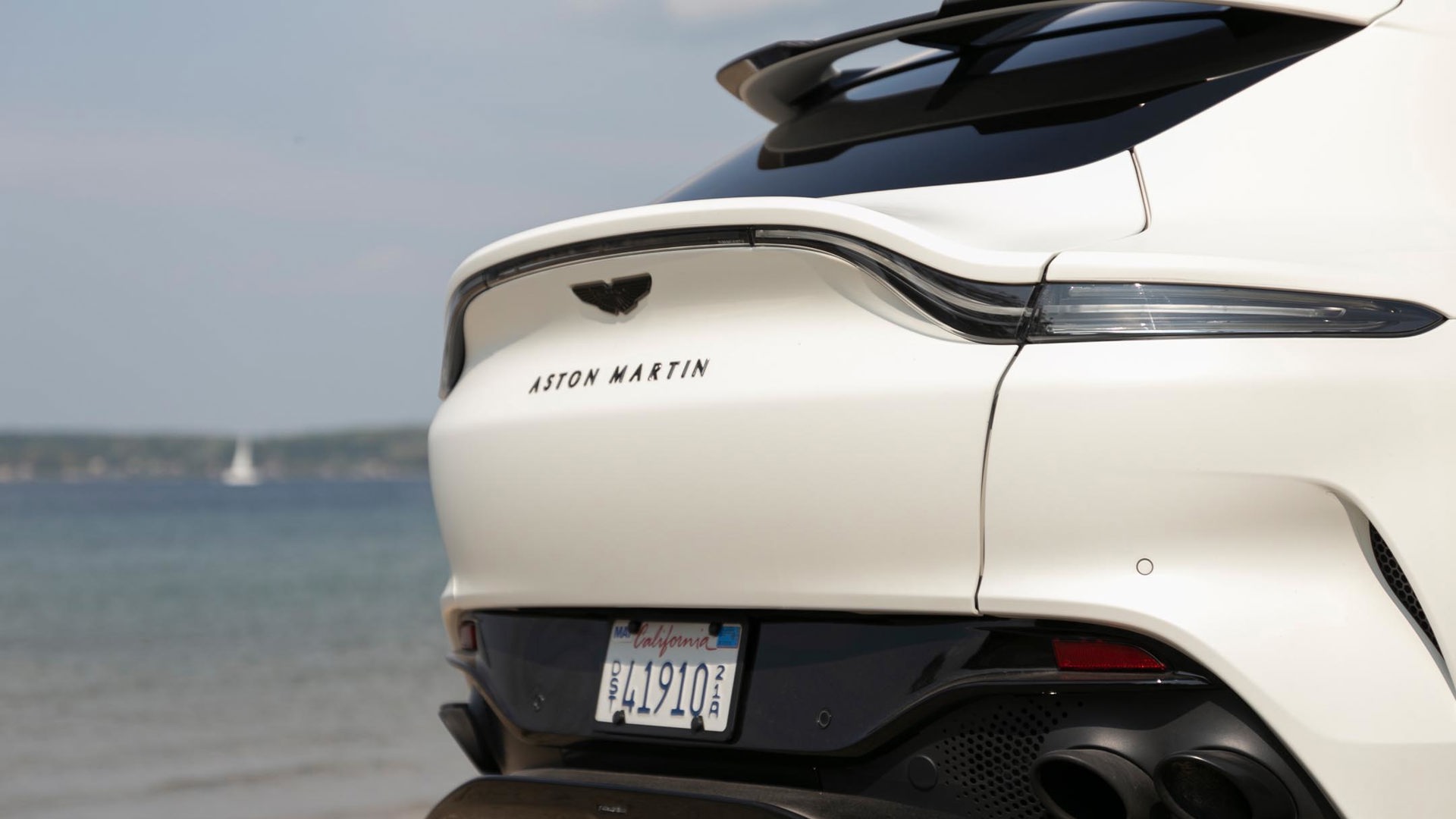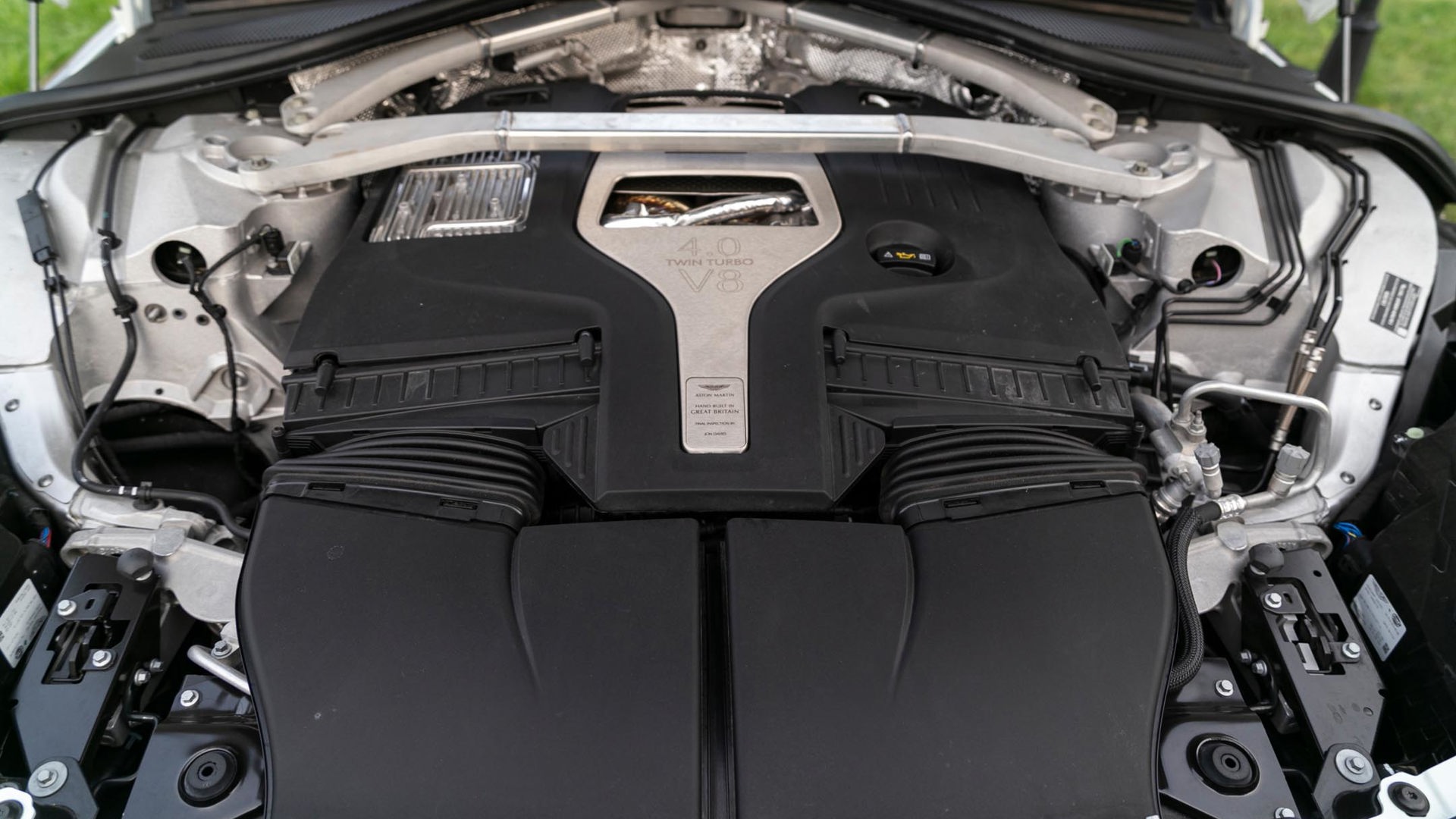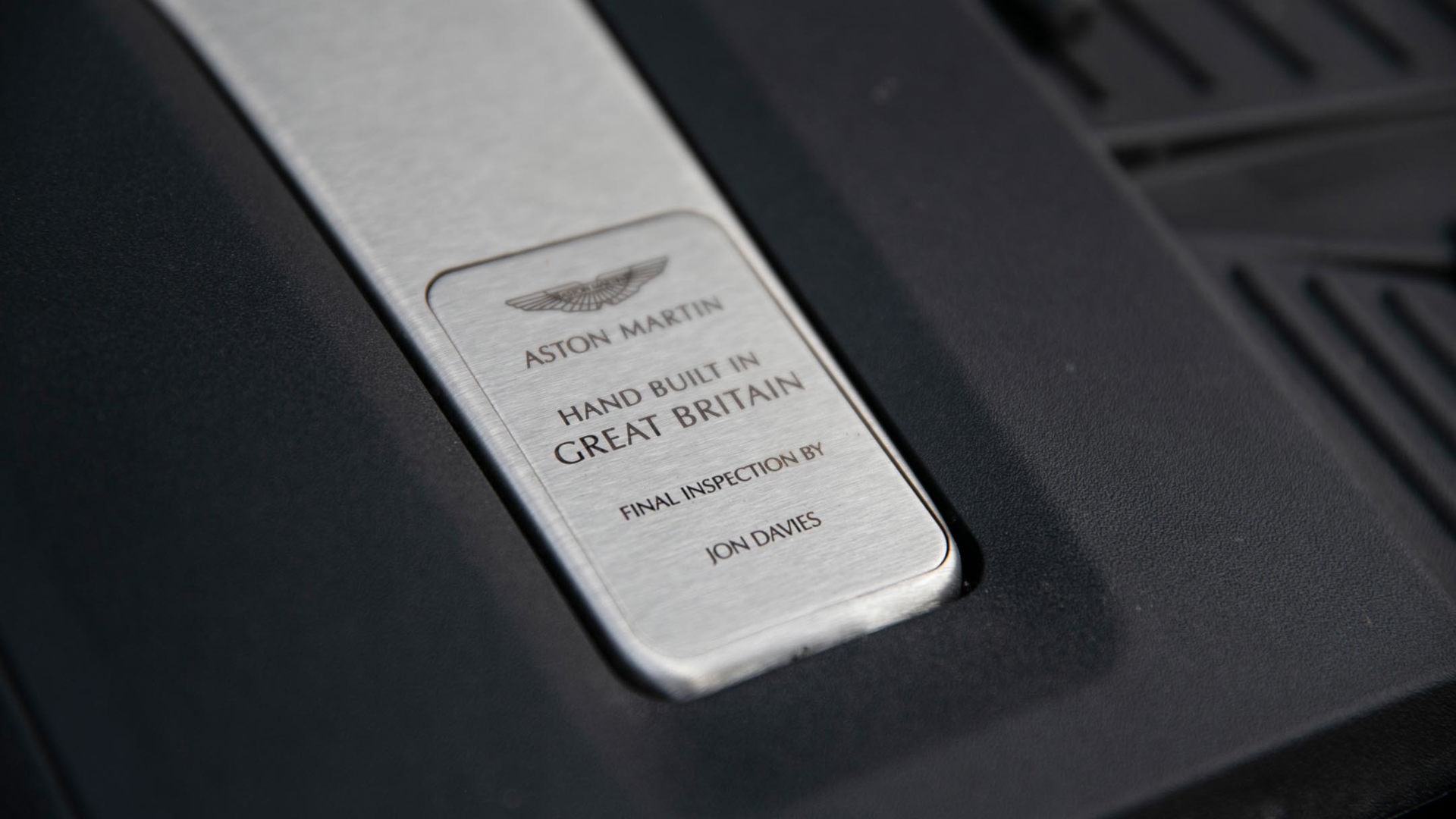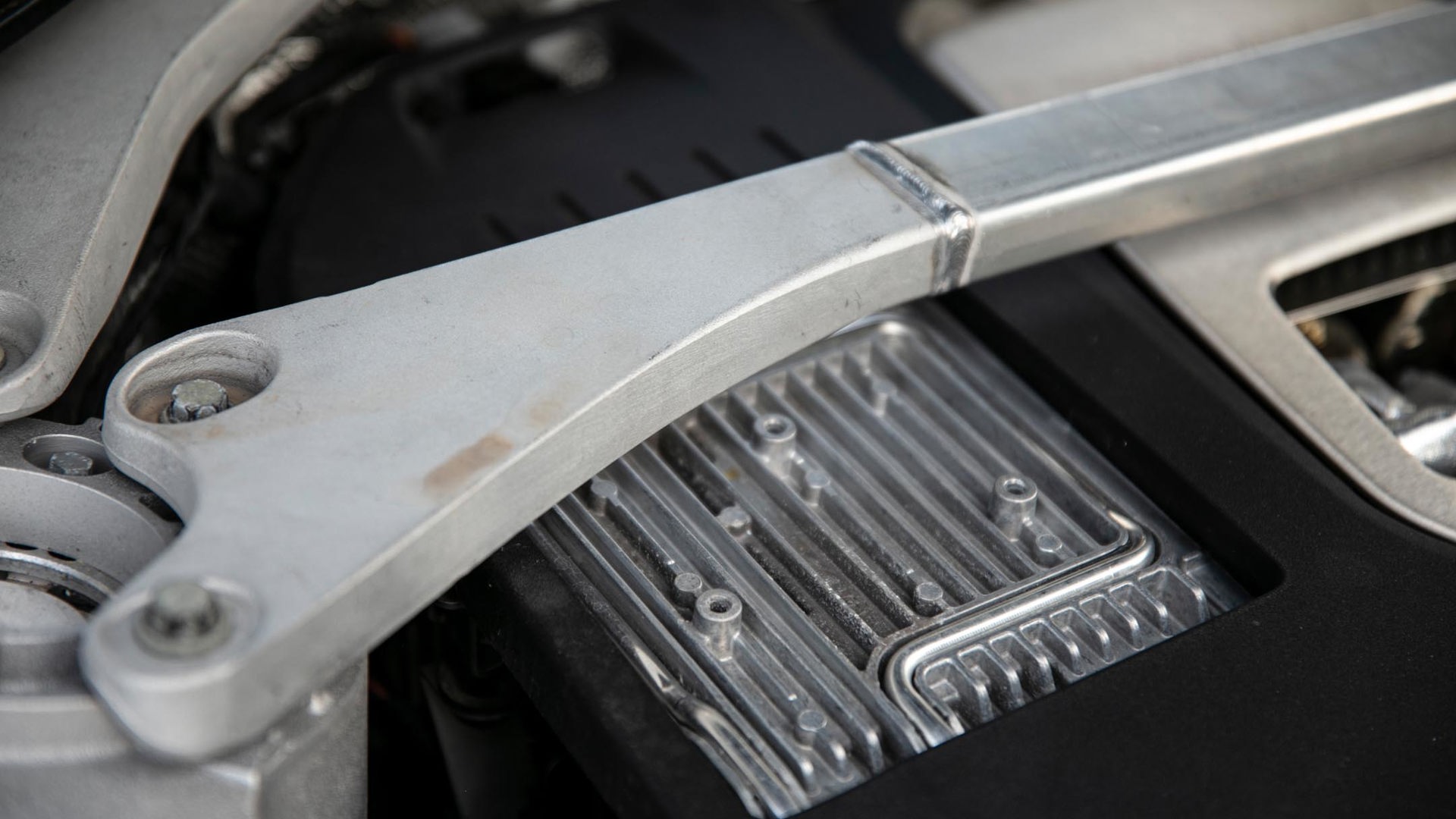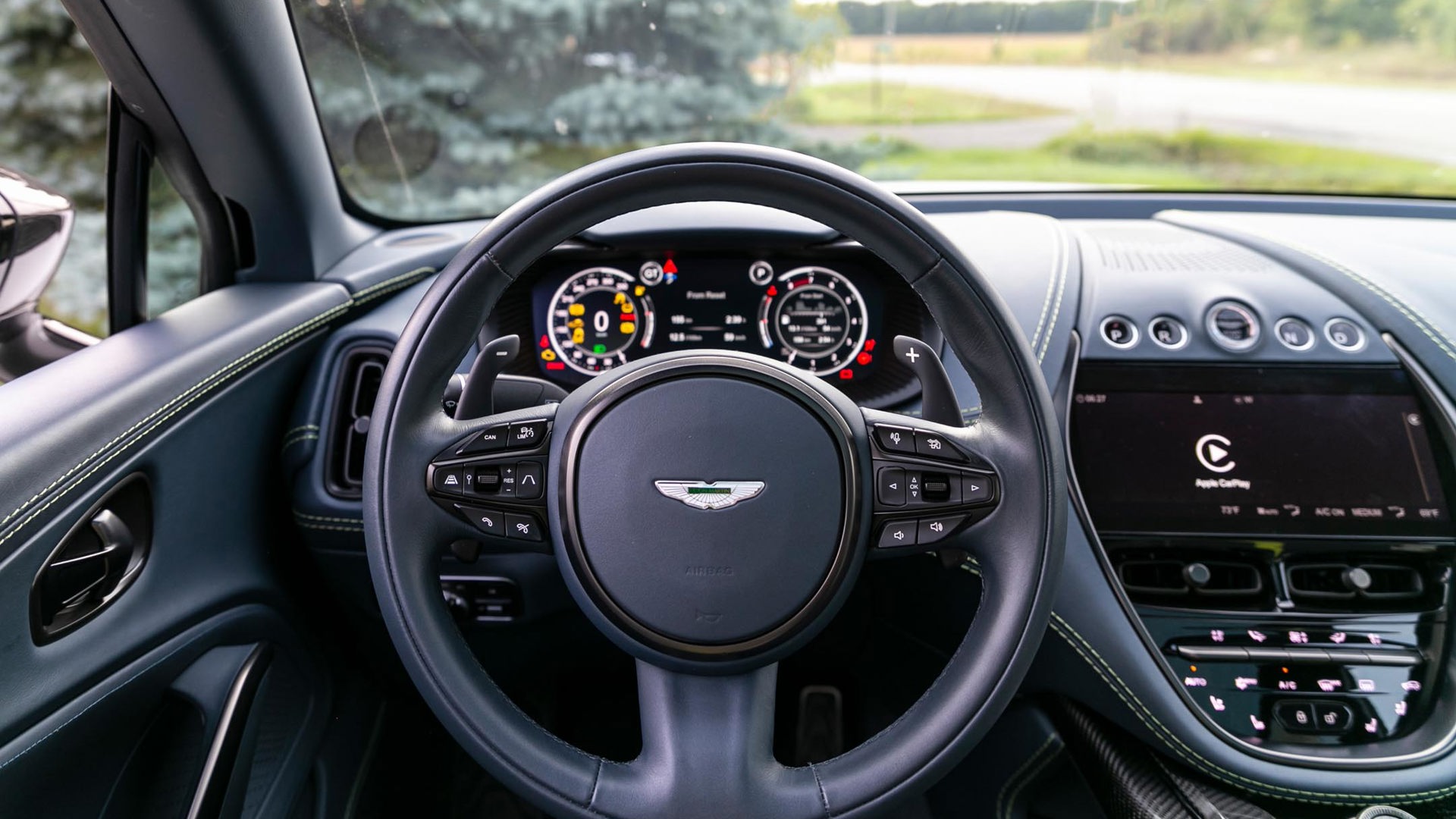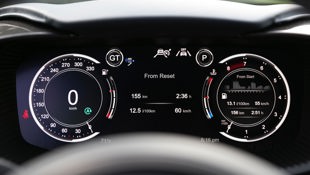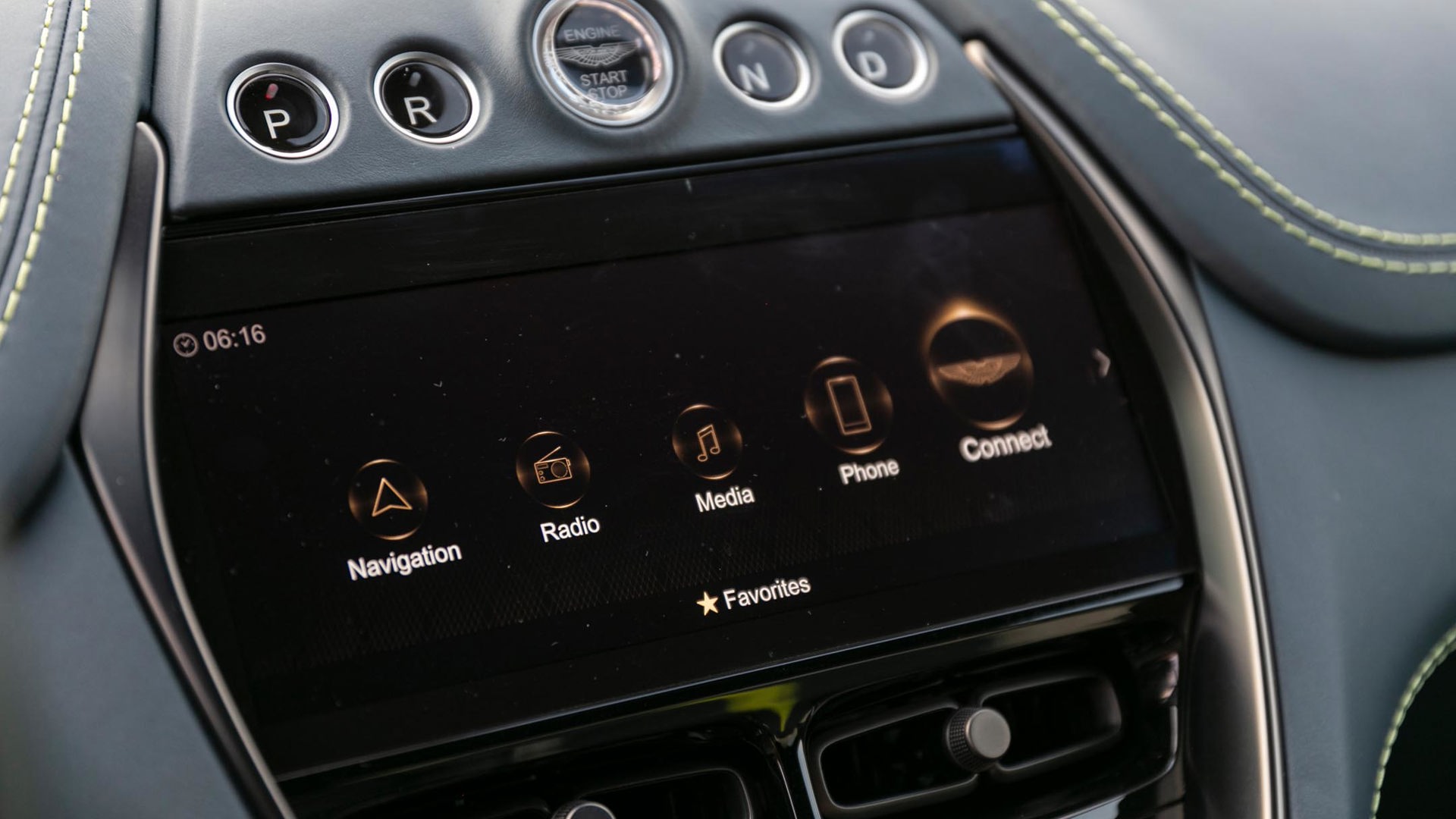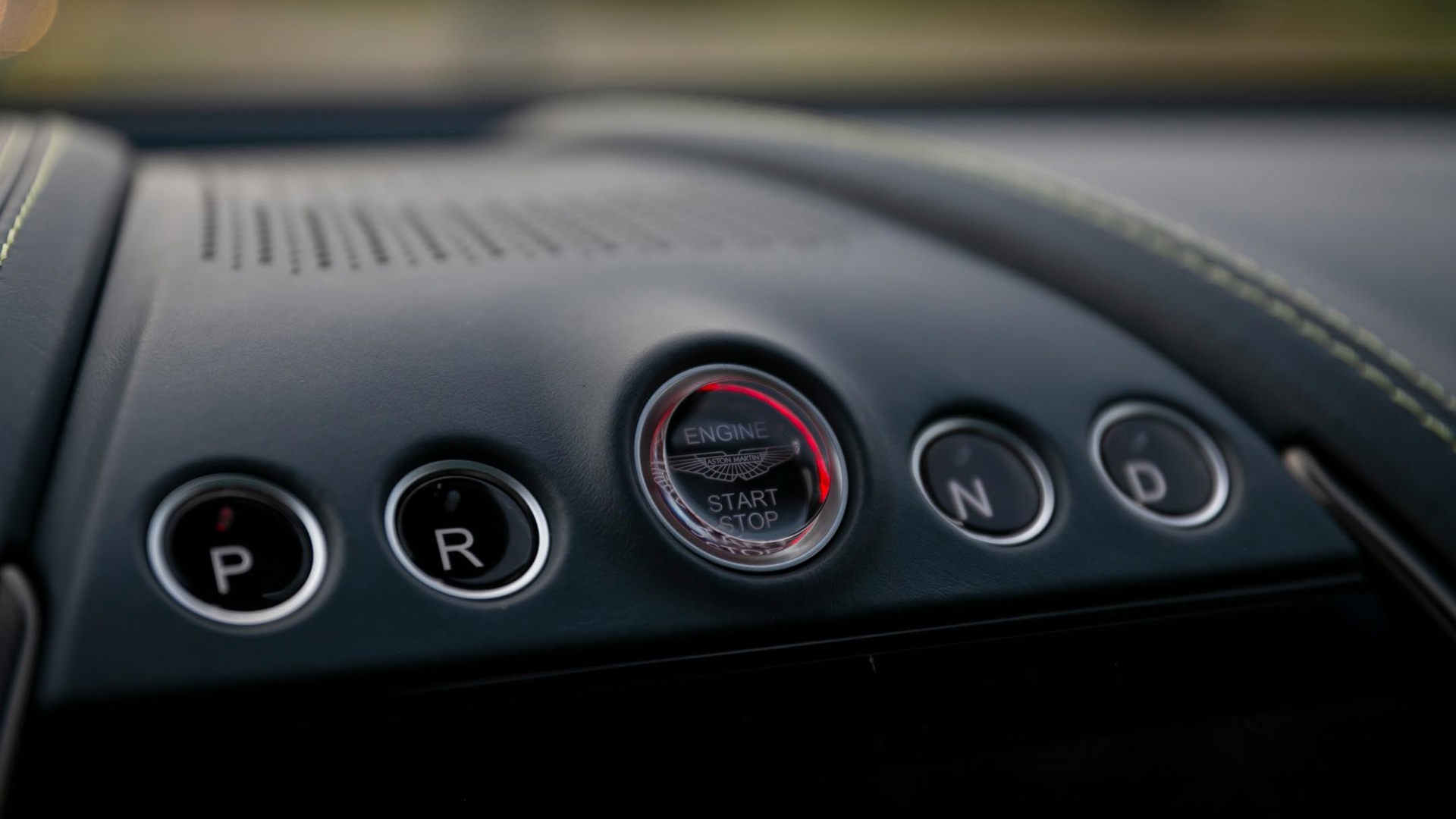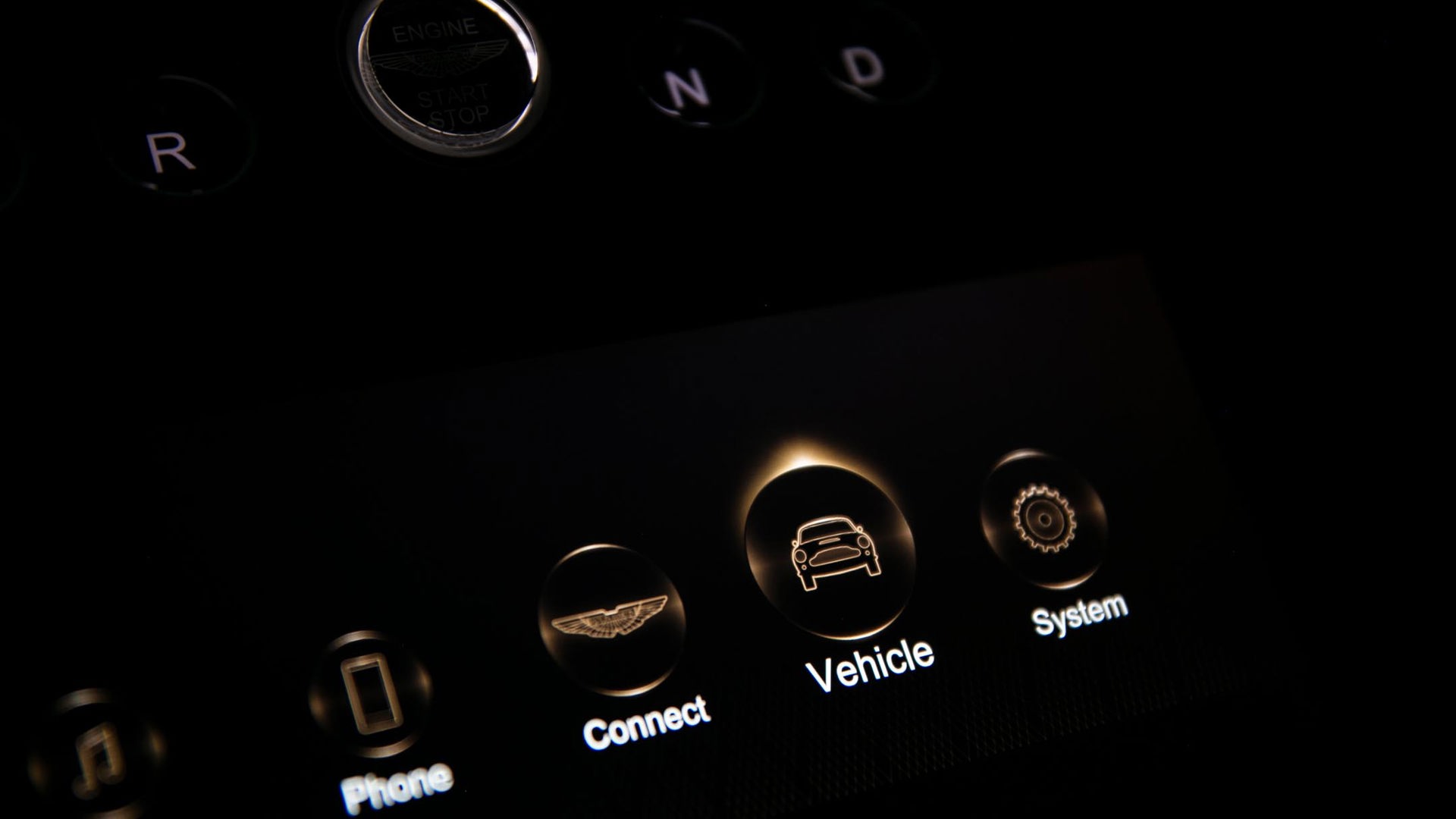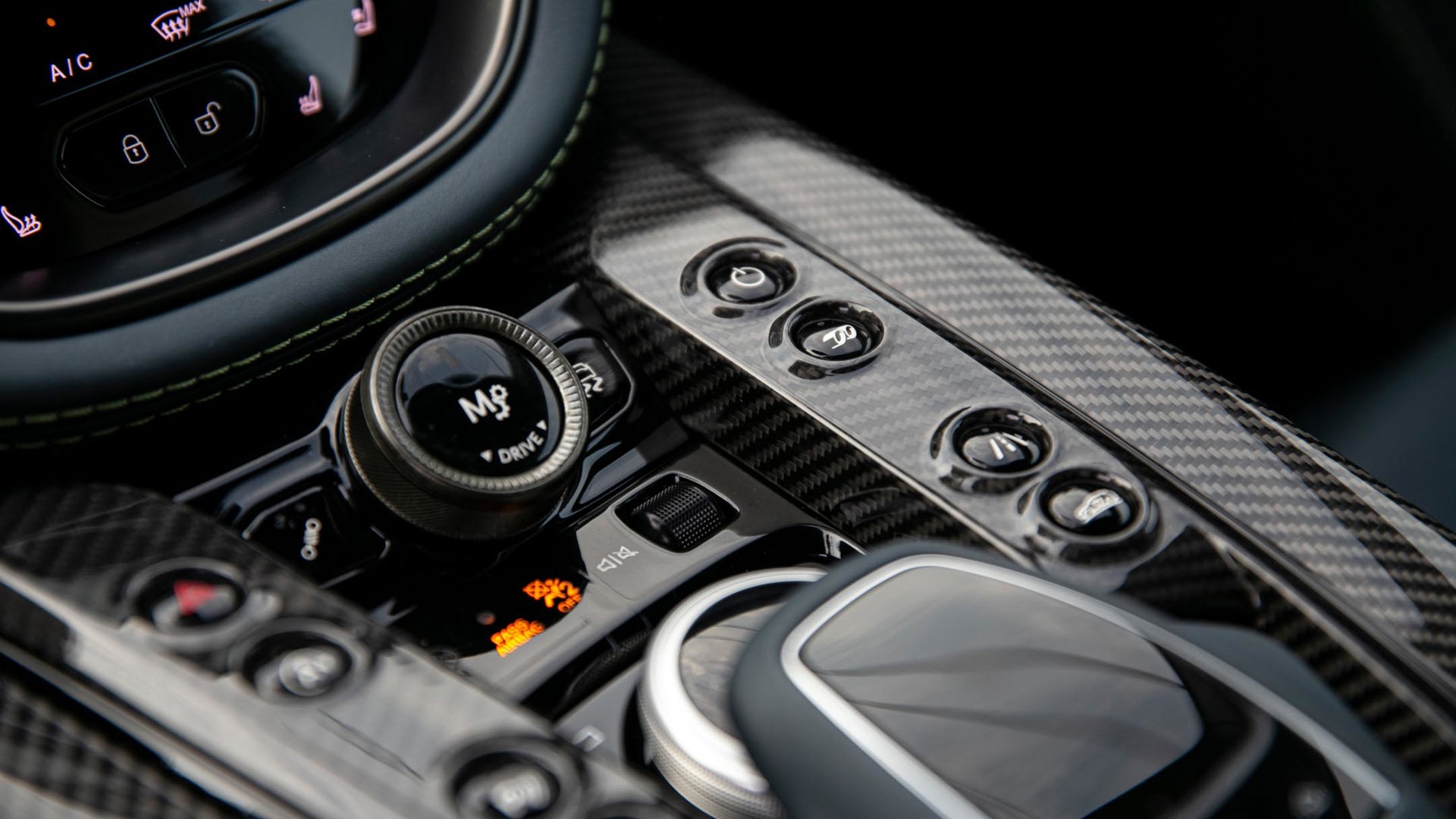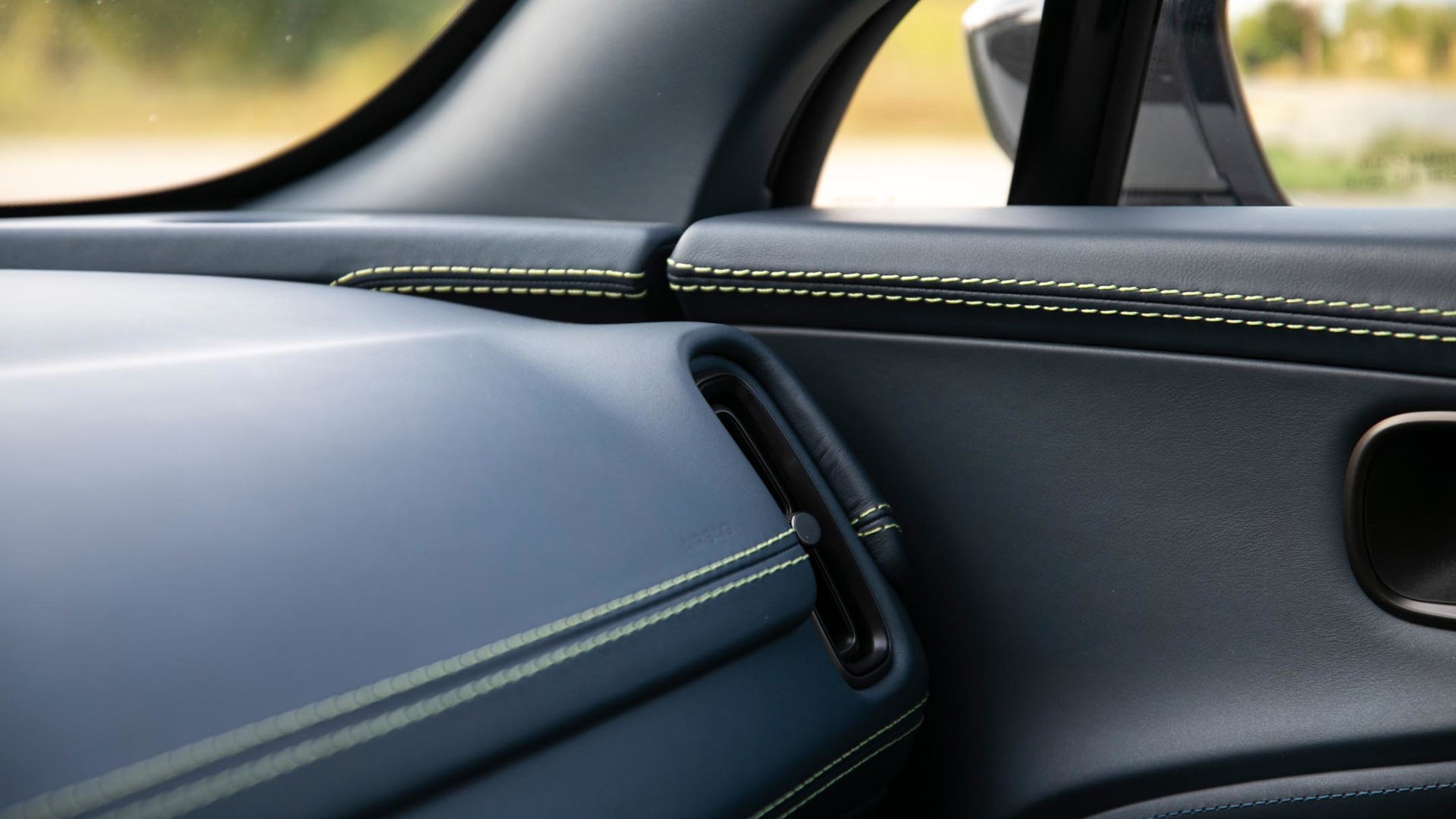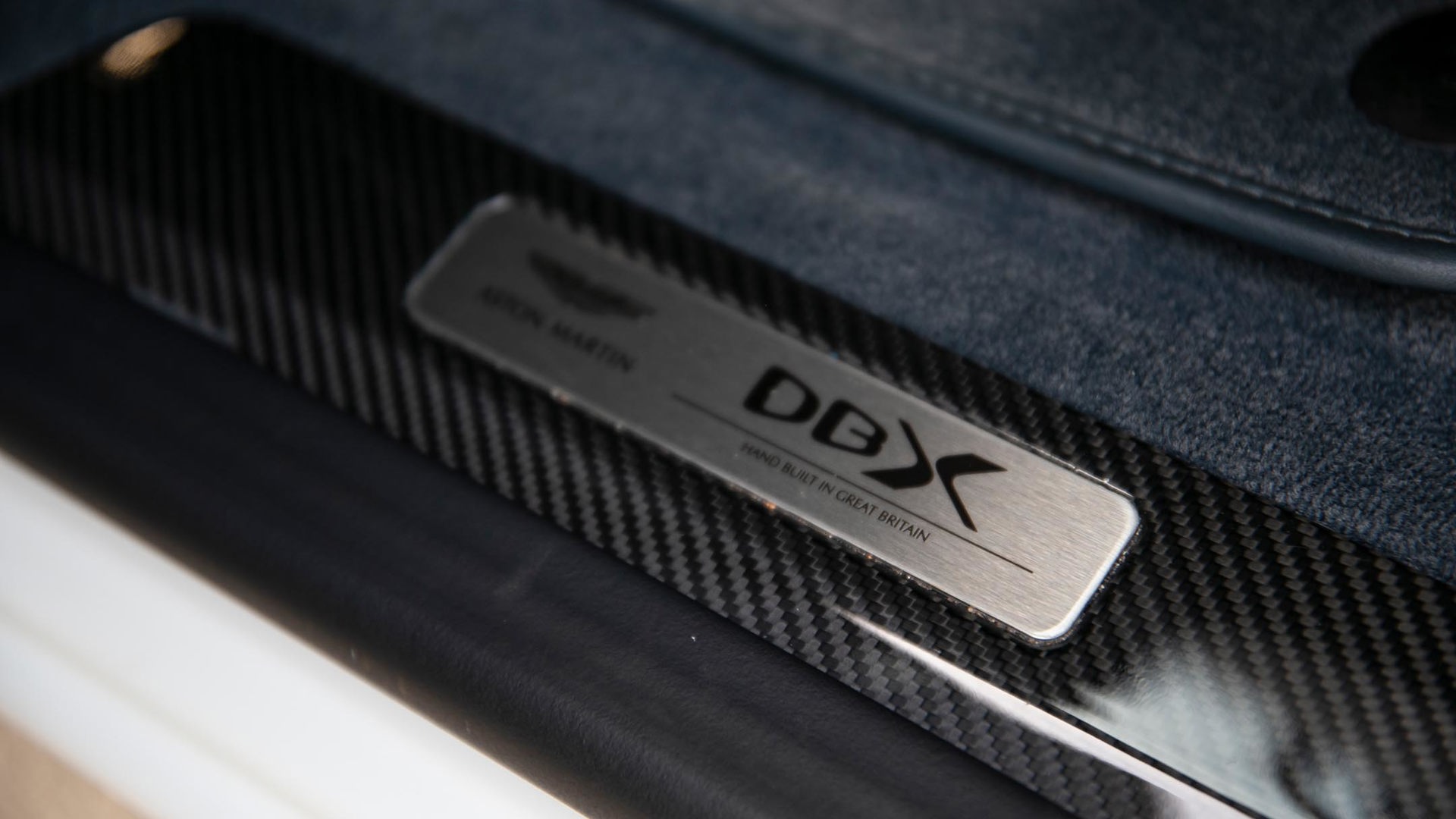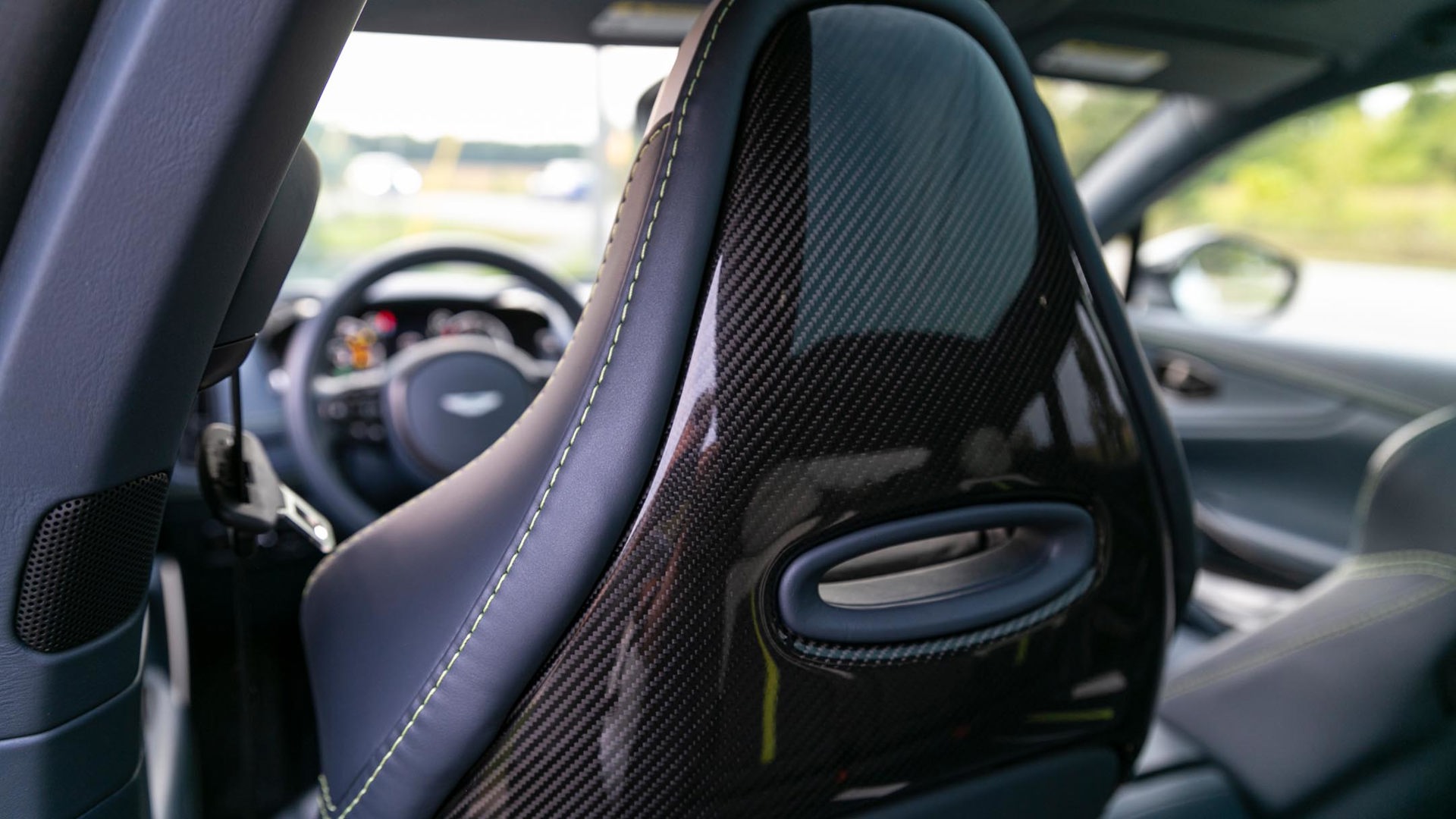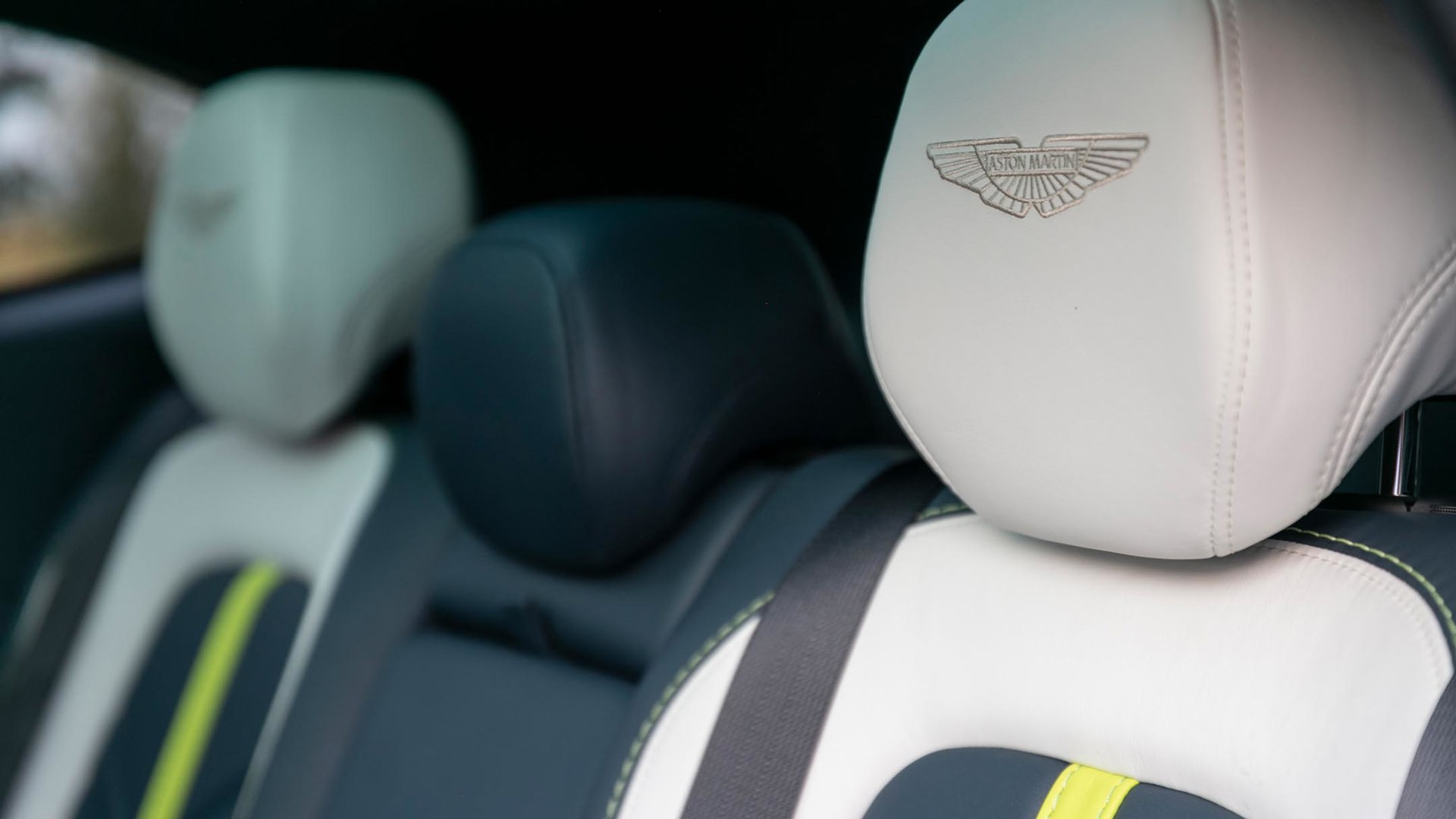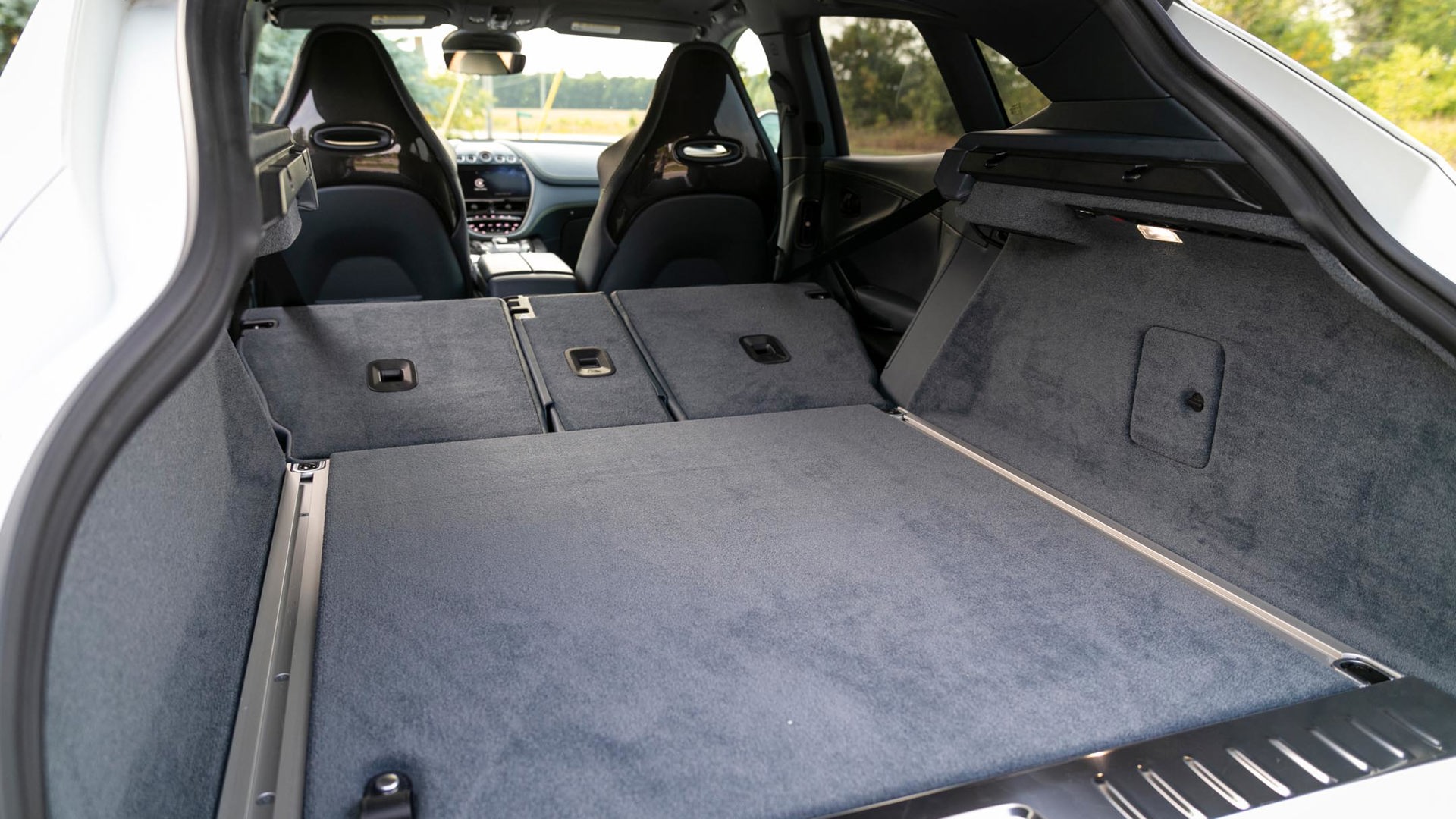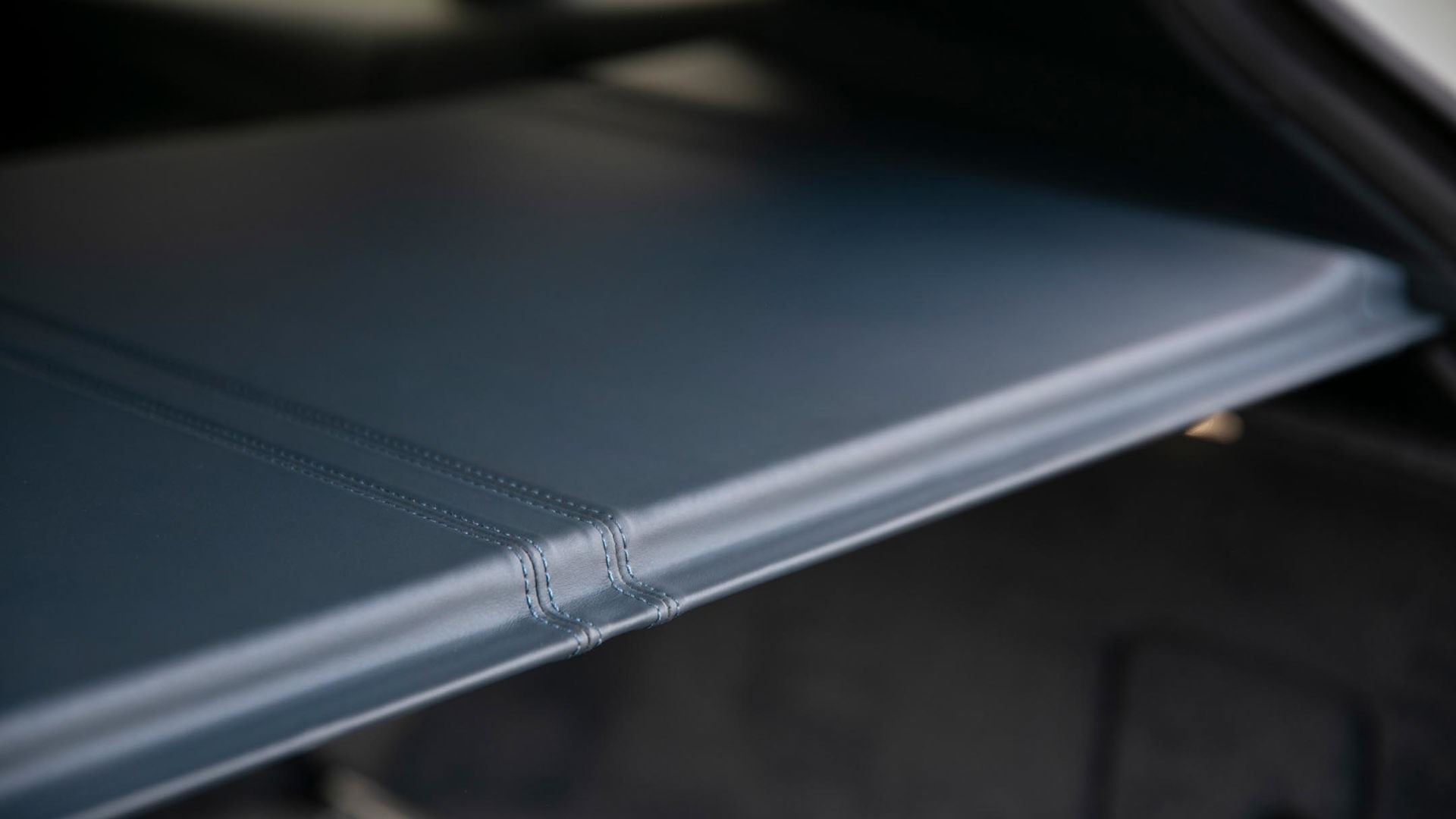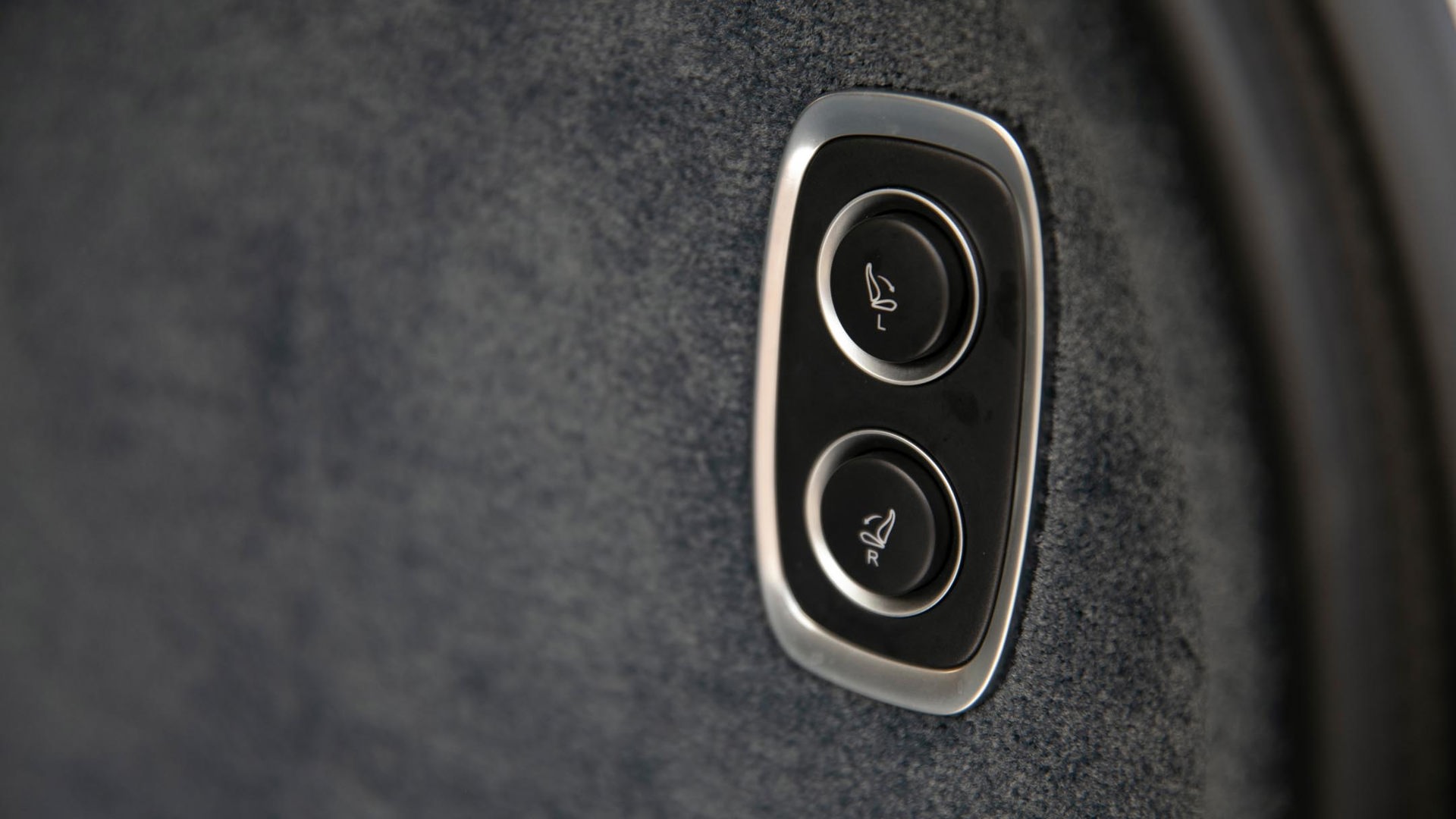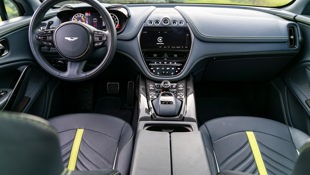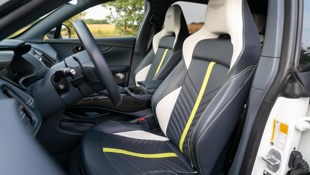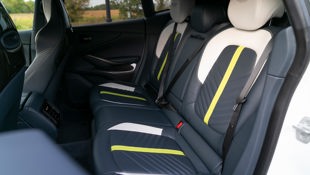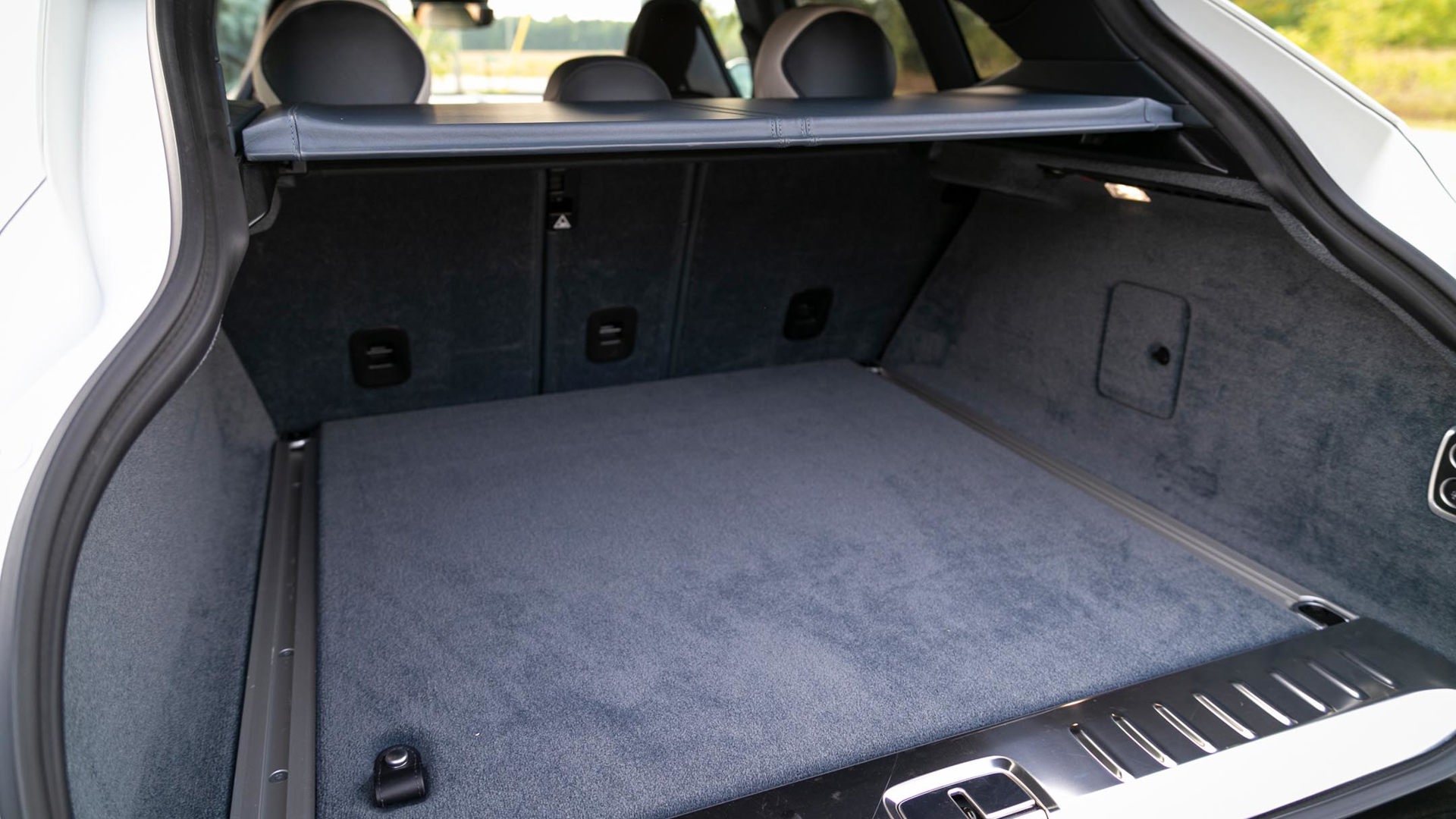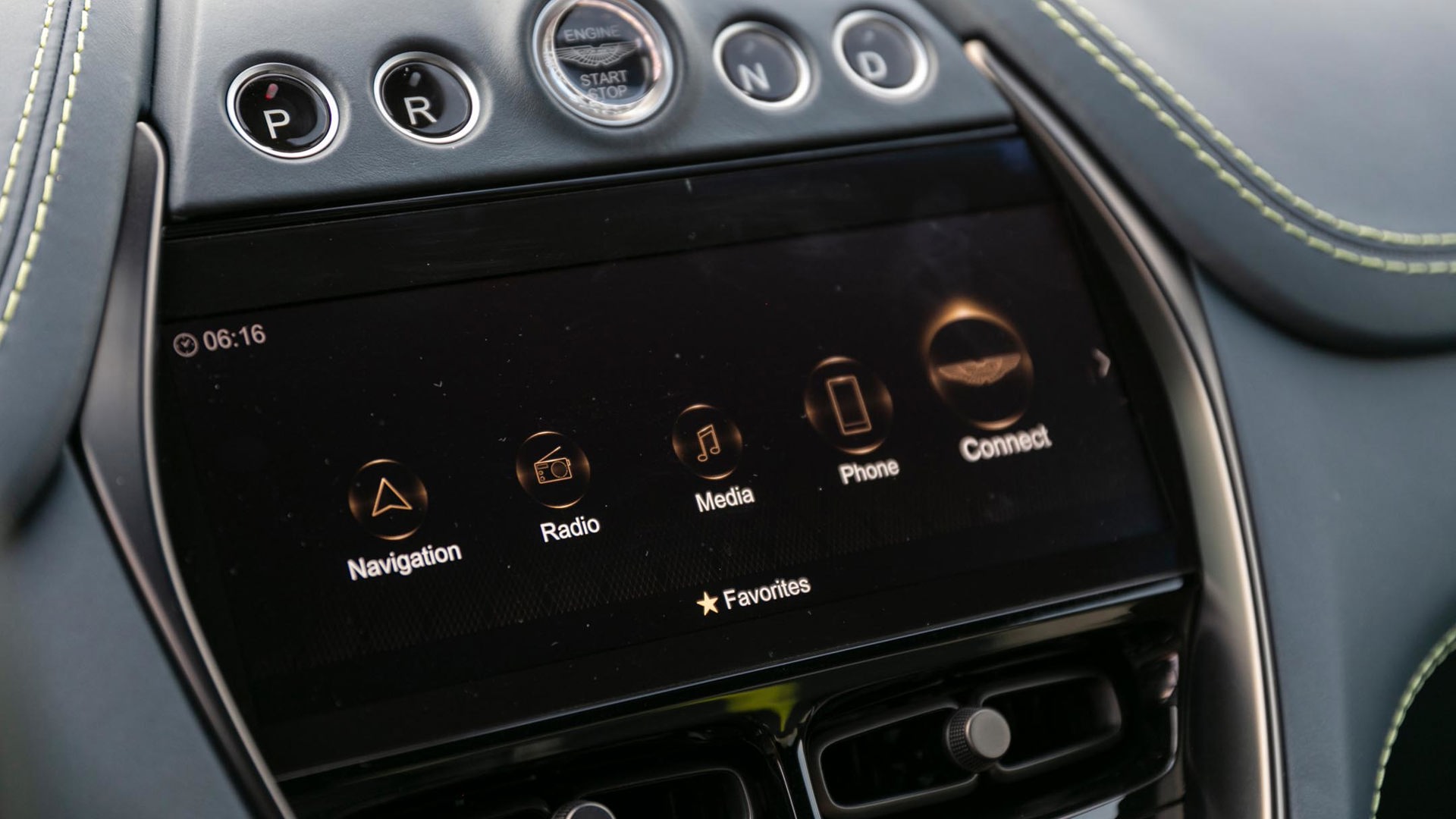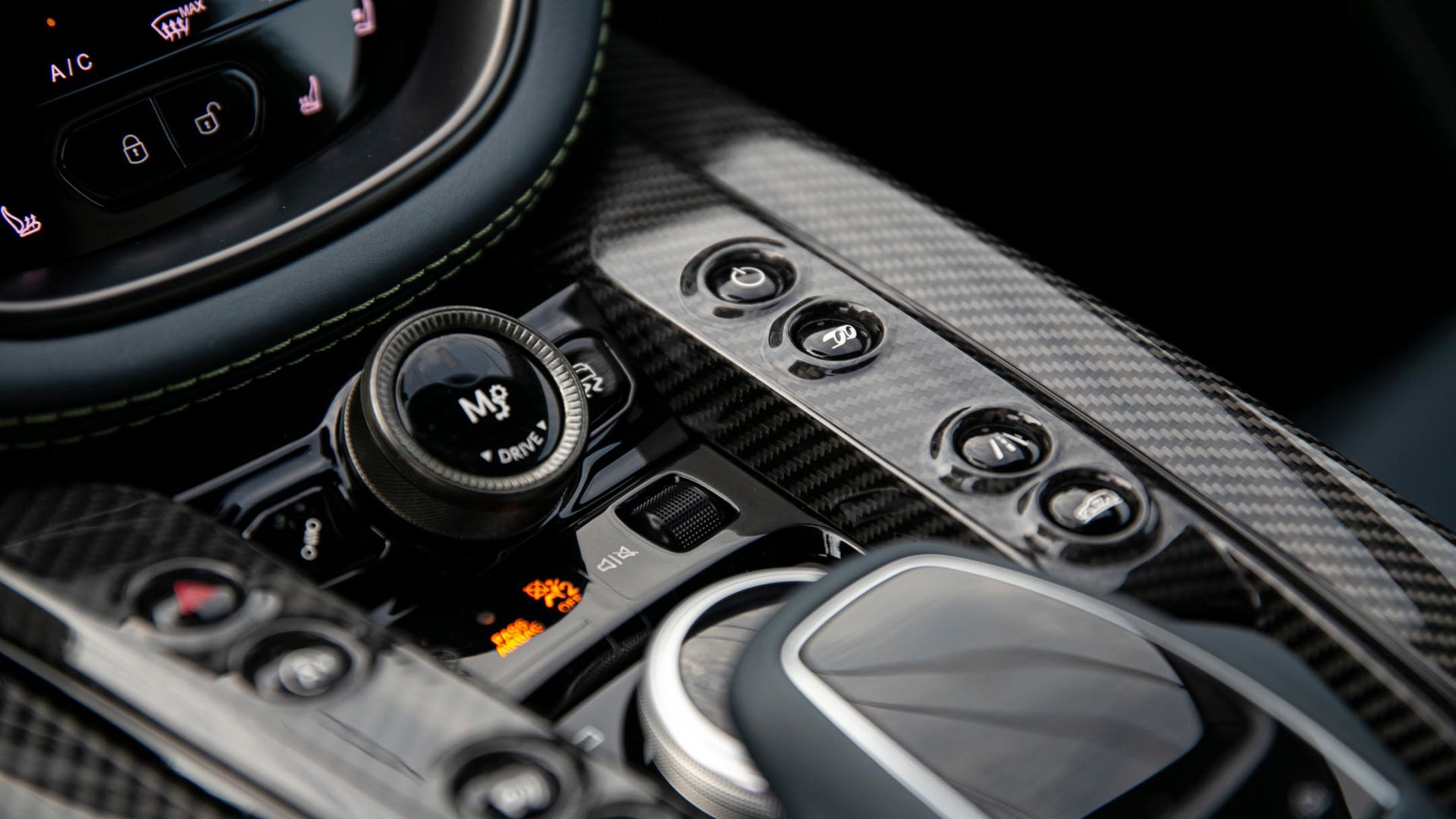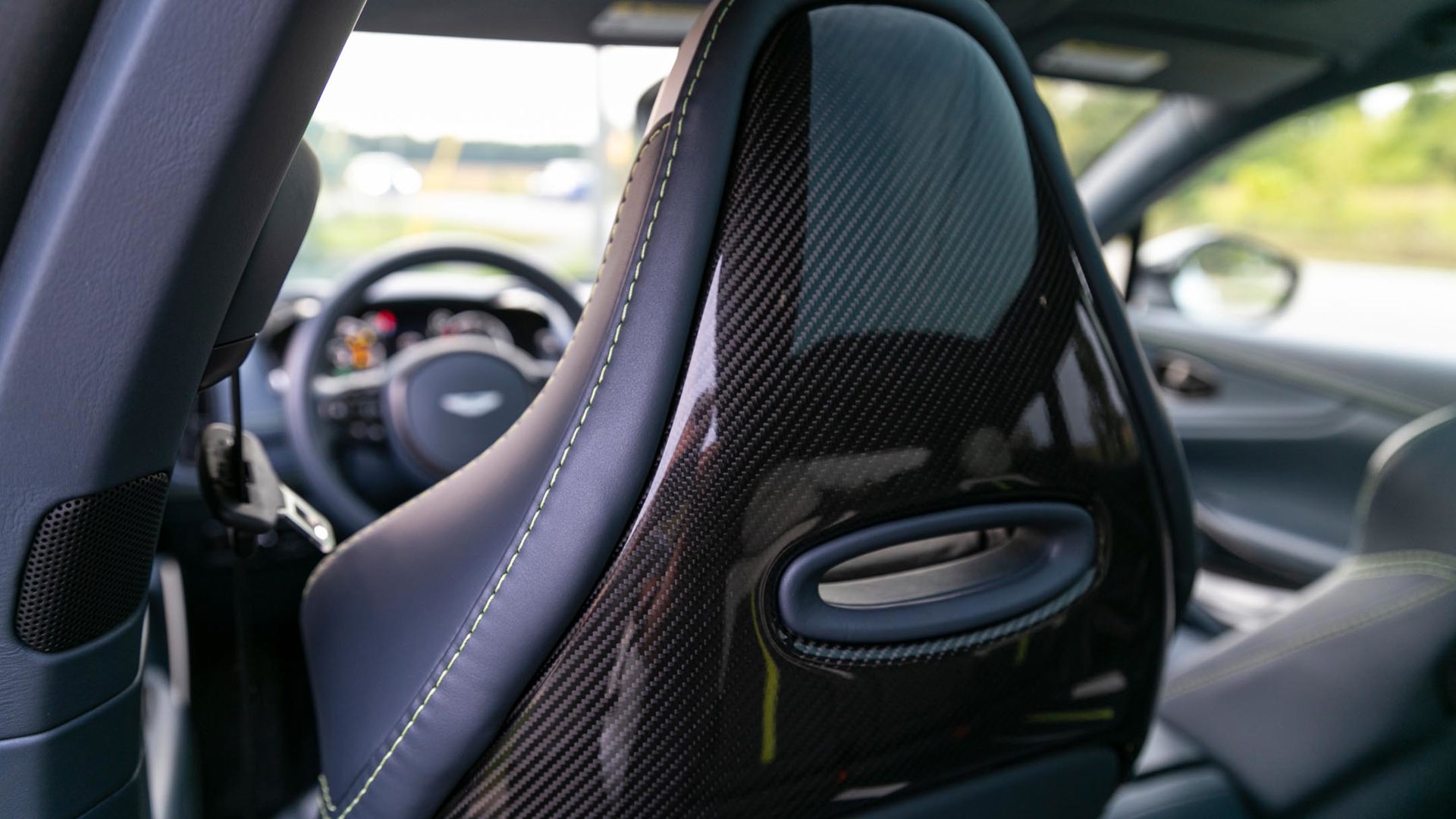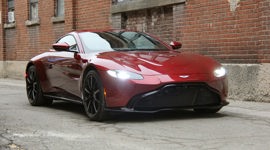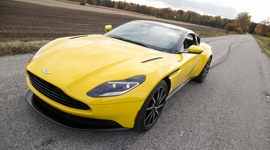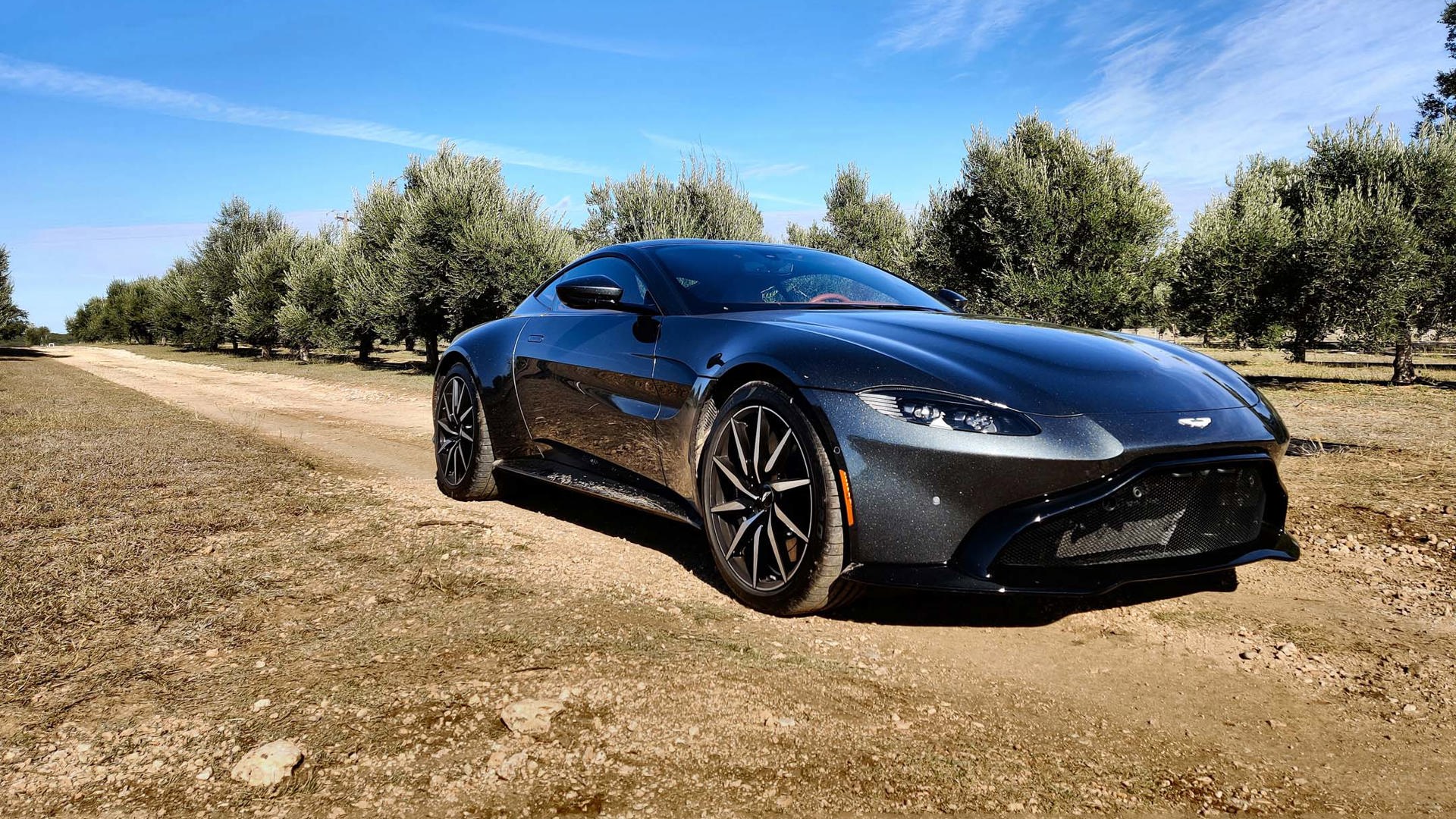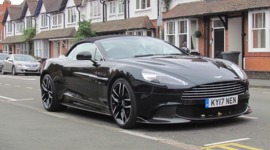 AutoTrader SCORE
AutoTrader SCORE
-
STYLING8/10
-
Safety8/10
-
PRACTICALITY7/10
-
USER-FRIENDLINESS7/10
-
FEATURES8/10
-
POWER9/10
-
COMFORT8/10
-
DRIVING FEEL8/10
-
FUEL ECONOMY6/10
-
VALUE6/10
The very concept of an SUV crafted to be a high-performance track weapon makes as much sense as strapping a backpack to a cheetah.
Sure, it might be quick, but there are necessary compromises to outright speed and nimbleness when adding bulk, mass, and a taller centre of gravity to something lithe and lovely like a proper sports car. Or a cheetah.
Still, Porsche has been making wildly capable versions of its SUVs for decades, and just about every premium or performance brand has followed suit, adding high-performance crossovers to their lineups. It’s no surprise, then, that the Aston Martin DBX has joined the party – and that it’s been so well-received.
Power: 9.5/10
But the machine you see here is no ordinary DBX – if you can call the standard 550-hp version ordinary in the first place. This is the 2023 Aston Martin DBX707, the numeric component directly relating to this machine’s output. OK, that’s 707 metric horsepower, which works out to 697 hp based on our North American measures – and that doesn’t quite match the name, but it’s still an enormous amount of gumption.
The engine begins life as the same Mercedes-AMG-sourced 4.0L V8 that’s in the lesser DBX, but it gets a pair of wilder turbochargers from the AMG GT sports car as well as a series of internal component upgrades, plus a careful re-tune from Aston Martin. The power is directed through a nine-speed automatic transmission housed in a cast magnesium case and managed by an oil-cooled multi-plate wet clutch.
As is fashionable amongst performance machines, the DBX707 has launch control that will help rocket it from stop to 100 km/h in a claimed 3.3 seconds. That’s wickedly fast, of course, and along with those impressive mechanicals is the fact that this Aston will pass a Lamborghini Urus on its way to the end of the drag strip. Nerds like yours truly will happily point out that Porsche’s Cayenne Turbo GT will catch it.
So will the much cheaper (and homelier) BMW iX M60, as well as Tesla’s Model X Plaid. Of course, neither those electric options – nor most anything else on the road – will hang on all the way to this Aston Martin’s 311-km/h top speed.
Driving Feel: 8/10
Despite the colossal power on tap, driving the DBX isn’t a hair-raising experience the rest of the time. Even in sport mode, the transmission is eager to climb cogs as quickly as possible, meaning in spite of its wealth of power, the DBX707 often requires a few downshifts to get any truly sizzling acceleration.
Fortunately, the 707 is more than just a drag-strip racer. The standard DBX suspension has been upgraded to enable higher handling limits, and the enormous Pirelli P Zero tires cling to the pavement with ferocity. Still, the power’s there to let the rear end step out if you get saucy with the throttle. Graciously, the standard carbon-ceramic brakes can shed speed in a hurry.
The steering is very quick, and the numbness often found in SUVs is certainly absent here. It’s a genuinely fun and engaging machine to drive, especially at speed.
Fuel Economy: 6/10
The sort of V8s that power super cars don’t tend to be thrifty with fuel, and the DBX707’s is no exception. Rated at 15.7 L/100 km in the city, 12.0 on the highway, and 14.0 combined, it’s no worse than many V8-powered SUVs offering far less performance, and with primarily back-road driving during this test, its indicated average in the mid-12s was perfectly respectable.
Styling: 8/10
The DBX is one of those machines that isn’t done any favours by photos, and this version is even less so. The in-person presence is so strong, it’s more like a gravitational pull. It’s wide and sits squat on its haunches, with distinct character lines flowing from the fender flares down the flank of the body. The rear bears a familial resemblance to other contemporary Astons, with the thin strip of LEDs flowing up the ducktail spoiler and back down to the beltline. There’s a ridiculous, protruding, double-layer rear valance and a tasteful carbon fibre roofline spoiler. Up front, the DBX’s grille has been enlarged significantly to consume bigger gulps of air.
Typically, Aston Martins fill the role of the sensual supercars with jaw-dropping beauty, but the DBX707 is a brutal machine rife with aerodynamic accoutrement. The few passersby who paid any mind to it seemed shocked to notice the brand’s winged badge on the nose.
Inside, the heady aroma of fine leather is a powerful reminder that this is an Aston Martin. The blue hides cover everything that isn’t carbon fibre or glass, and they’re accented by white leather sections and wild lime green trim. James Bond would be mortified by the garishness, but it’s certainly unique.
Features: 8/10
Beyond the lavish interior finishes, there’s a panoramic glass roof, heated front and rear seats, and keyless entry, plus heated power-folding mirrors. The cargo cover in the back is even trimmed in fine leather. The premium audio system offers incredible power and fidelity, and the 10-inch touchscreen infotainment system enables Apple CarPlay and satellite radio. Still, there’s little here in terms of features you won’t find on cars costing one-third what the DBX707 does, but it’s a performance marvel and boasts the cachet of one of the auto industry’s most desirable brands.
User Friendliness: 7/10
For the most part, the switchgear is laid out intuitively. The infotainment system is straightforward and the climate controls have actual little switches instead of capacitive touch panels like so many other vehicles these days. Just to be different, Aston mounts the ignition switch and push-button gear selector top and centre on the dashboard. It’s a tedious placement that takes a while to get used to, especially when you’re in a hurry to switch from reverse to drive with traffic barrelling down on you. Myriad additional buttons are distributed on the centre console to control everything from lane-keeping assist to the volume of the exhaust pipes. There’s also a rotary dial to select drive modes that was repeatedly mistaken for a volume knob during this test.
Outward visibility is decent, with a sufficiently commanding view forward and laterally. The down-swept roofline pinches the rear three-quarter view somewhat, but the 360-degree camera view helps when parking.
Comfort: 8/10
Aston Martin has reportedly designed the DBX’s interior to suit a vast range of body sizes. Despite being shorter overall than its two primary competitors, the Bentley Bentayga (which is now available with an extended wheelbase) and Lamborghini Urus, the DBX offers more head- and legroom. Considering the marque’s last attempt at a four-door was the sexy but compromised Rapide, the DBX does a decidedly better job at keeping front and rear occupants happy.
The seats offer good support and proved comfortable even during a long day behind the wheel. Wind and road noise is decently suppressed, and the engine sounds can be subdued when cruising.
Practicality: 7/10
The air suspension manages ride quality fairly well; however, this is a very high performance machine, and it does border on the stiff side. While the standard DBX707 comes with 22-inch wheels, this tester was optioned up with 23-inch alloys that not only make their presence known over bumps, but they’re impractically large when it comes time to repair or replace them, as was discovered hours from Toronto on a Saturday afternoon when the pressure warning announced an issue with the driver’s side rear.
Safety: 8.5/10
The DBX707 comes with lane-keep assist, blind-spot monitoring and automatic emergency braking, plus a multitude of head, thorax, and knee airbags. Its serious brakes and handling chops should help drivers avoid collisions, too.
Value: 6/10
Starting at $271,400, the DBX707 finds itself in the rarefied field of measuring up against Bentley’s Bentayga Speed and Lamborghini Urus, both of which are somewhat less costly. Porsche’s Cayenne Turbo GT is nearly $100,000 less and offers similar performance but not the exclusivity.
With premium European models, we’ve grown accustomed to lengthy and costly option lists, but this DBX takes it to new extremes. The carpet specced here costs $2,300. The lime green stitching is $2,500. Those optional forged, 23-inch wheels add $6,200, while the satin-finish white paint adds $10,600. In total, more than $60,000 bolstered the bottom line with strictly visual, non-functional customization.
The Verdict
The sheer absurdity of making such a wildly capable, lavishly finished, track-ready sport utility vehicle boggles the mind. But wild absurdity and extreme performance (not to mention extreme cost) ensures exclusivity – a trait that carries significant value in this price range.
Trying to find reason in the 2023 Aston Martin DBX707’s existence is futile. Instead, it’s far more fun to unleash that cheetah, hear its roar, and revel in its swiftness. Bringing along the family and some luggage just makes it more fun.
| Engine Displacement | 4.0L |
|---|---|
| Engine Cylinders | V8 twin turbo |
| Peak Horsepower | 697 hp |
| Peak Torque | 663 lb-ft |
| Fuel Economy | 15.7 / 12.0 / 14.0 L/100 km cty/hwy/cmb |
| Cargo Space | 638 L |
| Model Tested | 2023 Aston Martin DBX707 |
| Base Price | $271,400 |
| A/C Tax | $100 |
| Destination Fee | $3,980 |
| Price as Tested | $336,580 |
|
Optional Equipment
$61,100 – Lunar White Satin paint, $10,600; Dark Grille, $900; Rear Privacy Acoustic Glass, $2,300; Smoked Taillights, $1,400; Carbon Fibre package, $11,000; 23-inch forged wheels, $6,200; Duotone interior, $9,200; Blue Haze Metallic Leather, $3,400; Carbon Fibre with Dark Chrome Jewellery, $4,000; Carbon Fibre Trim Inlay, $5,400; Dark Knight 720gsm Carpet, $2,300; Lime Green Contrast Stitch, $2,500; Black Chrome Badges, $1,900
|
|
